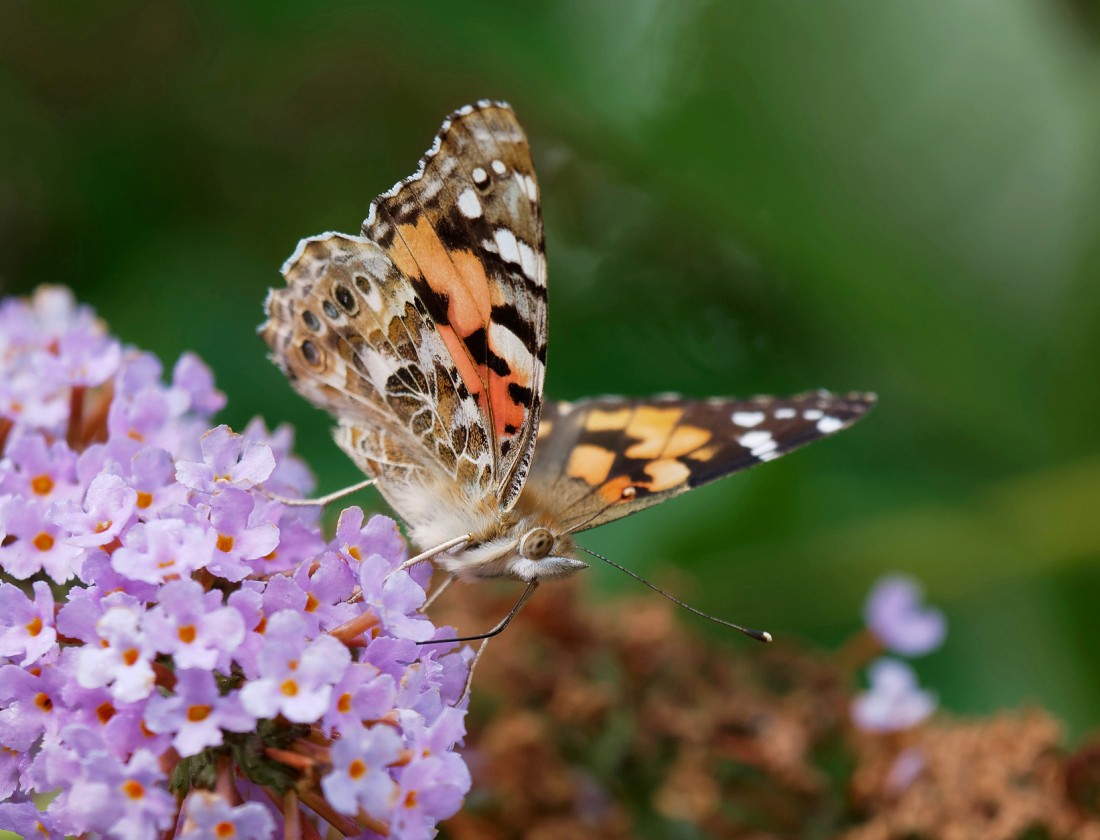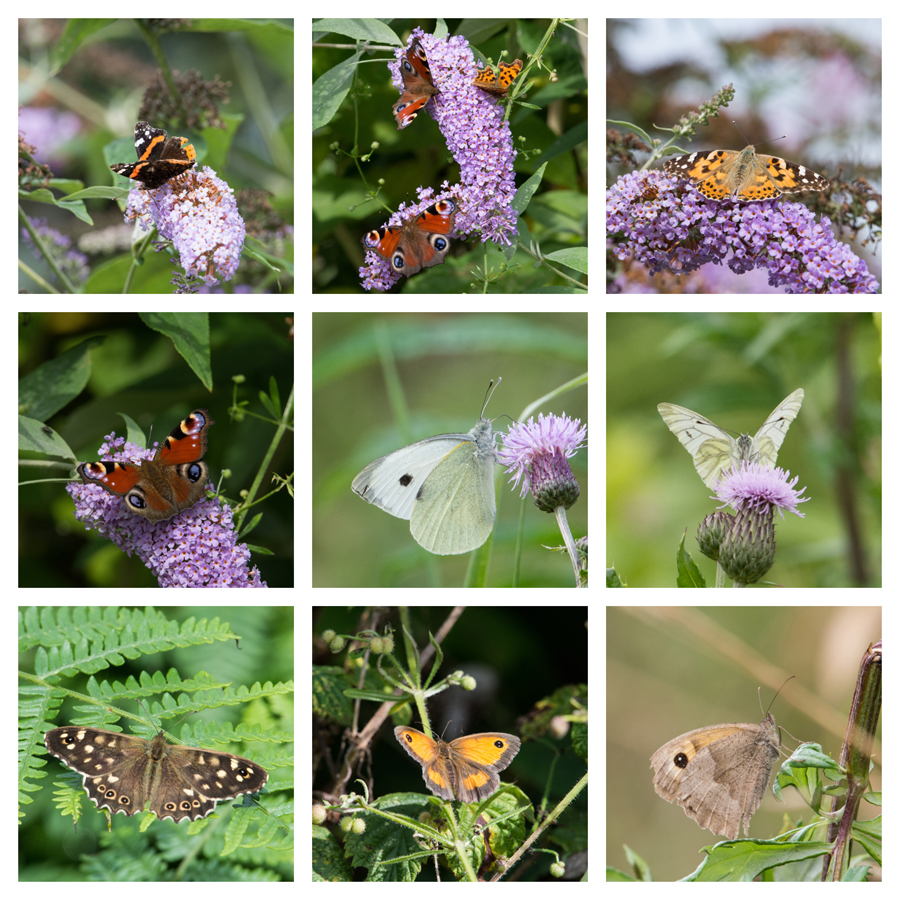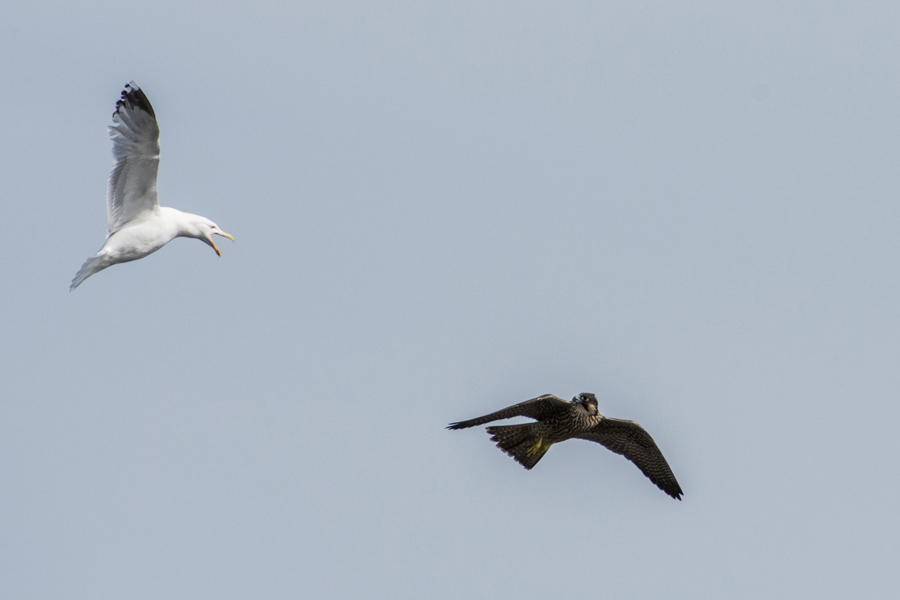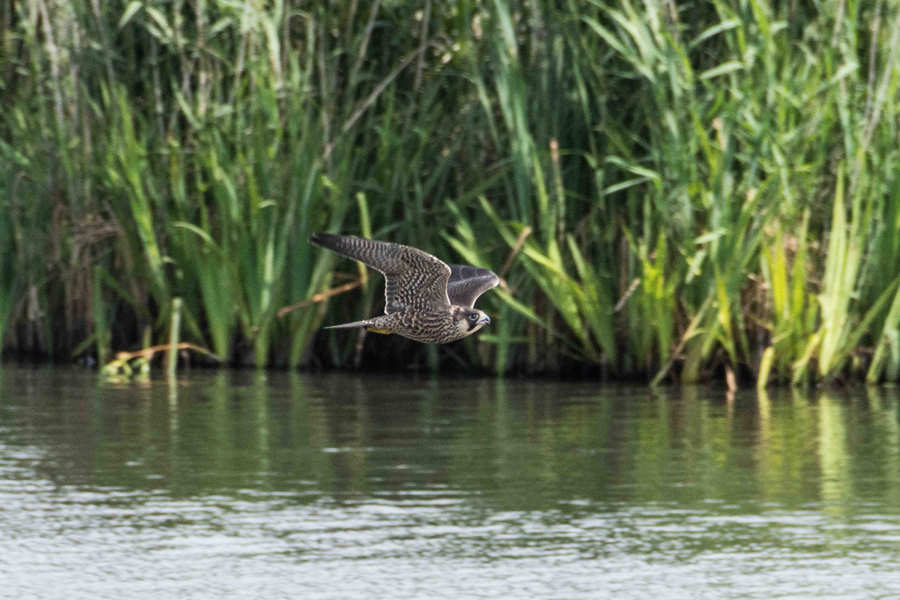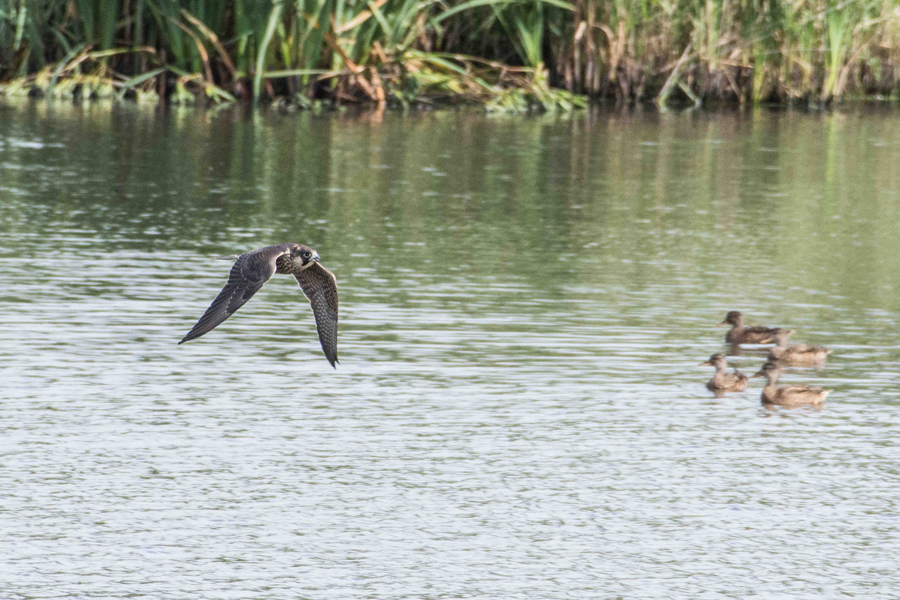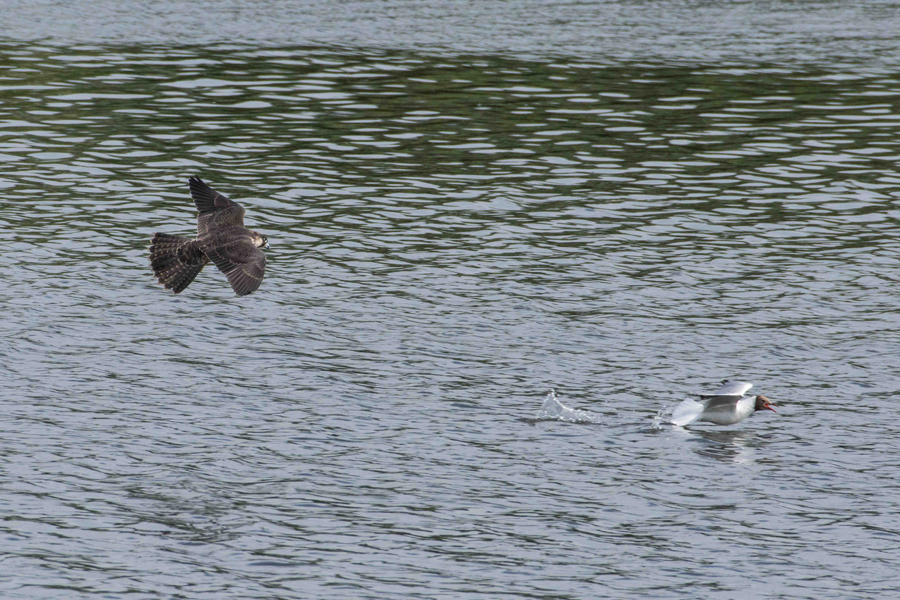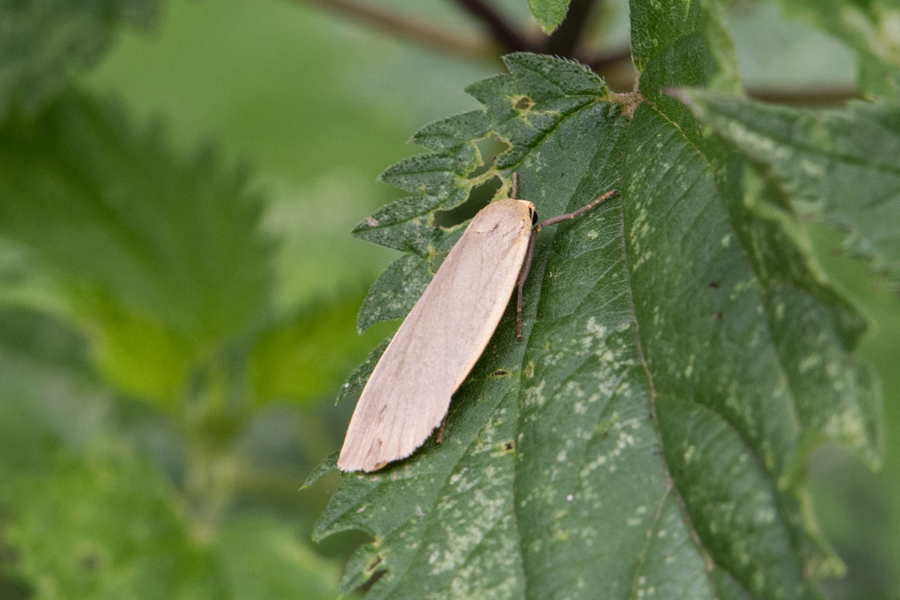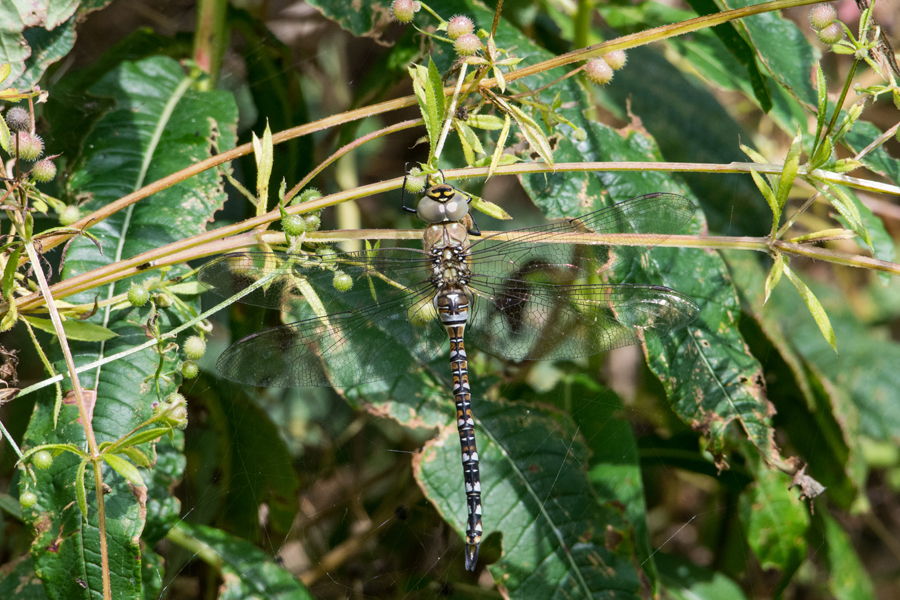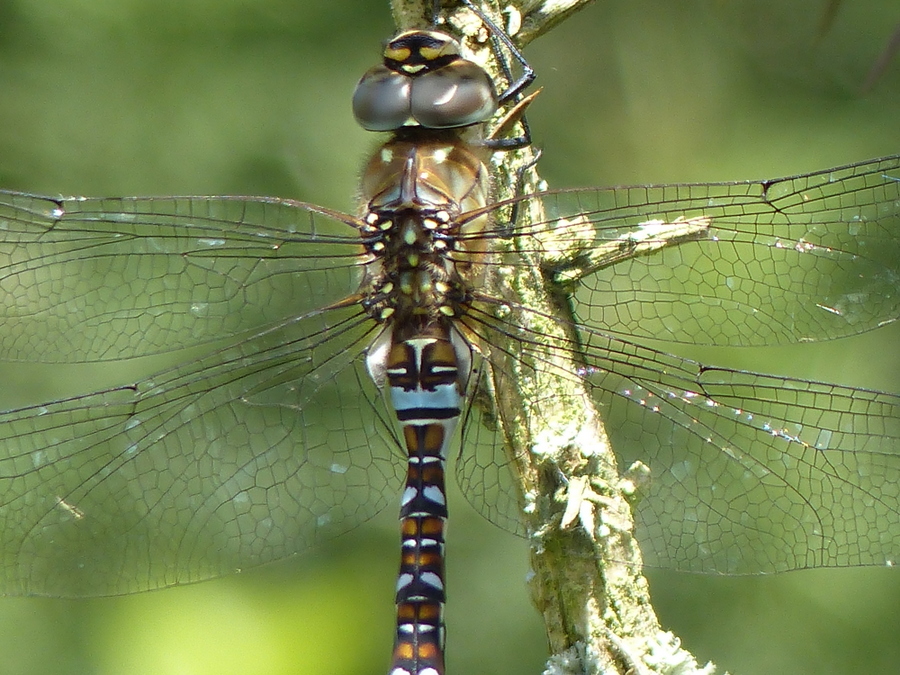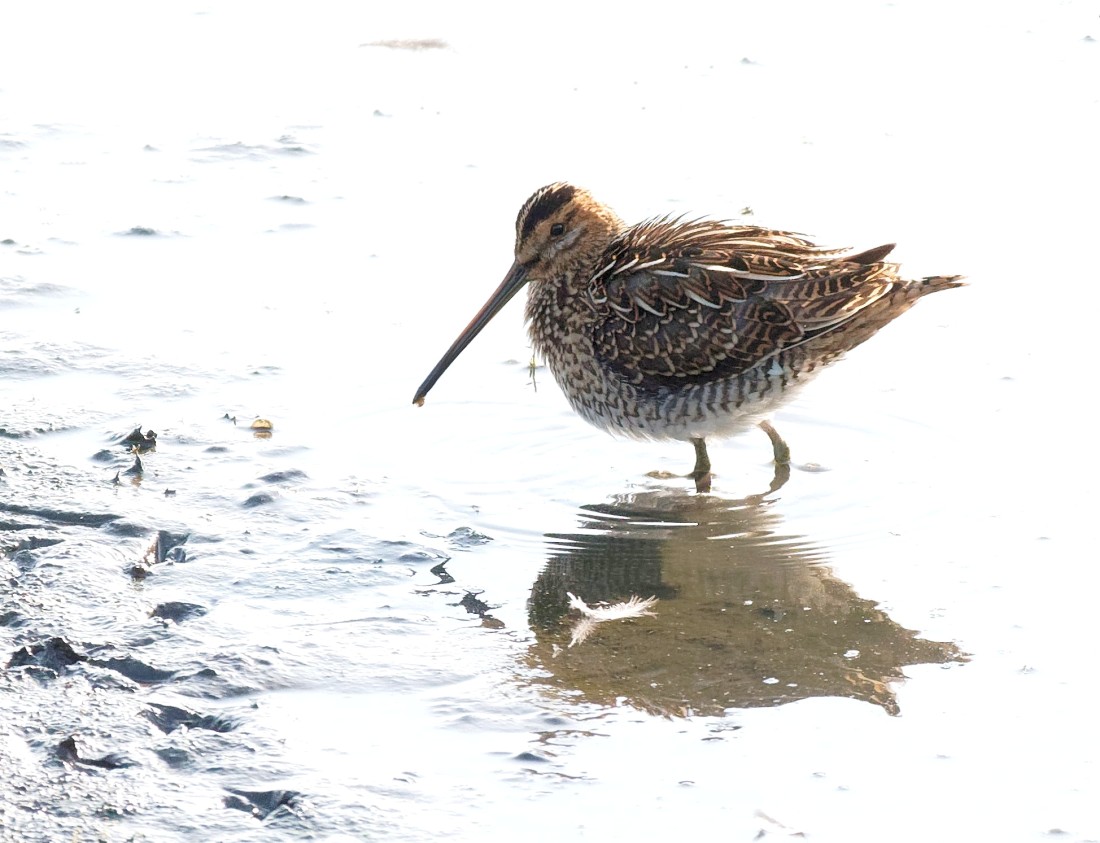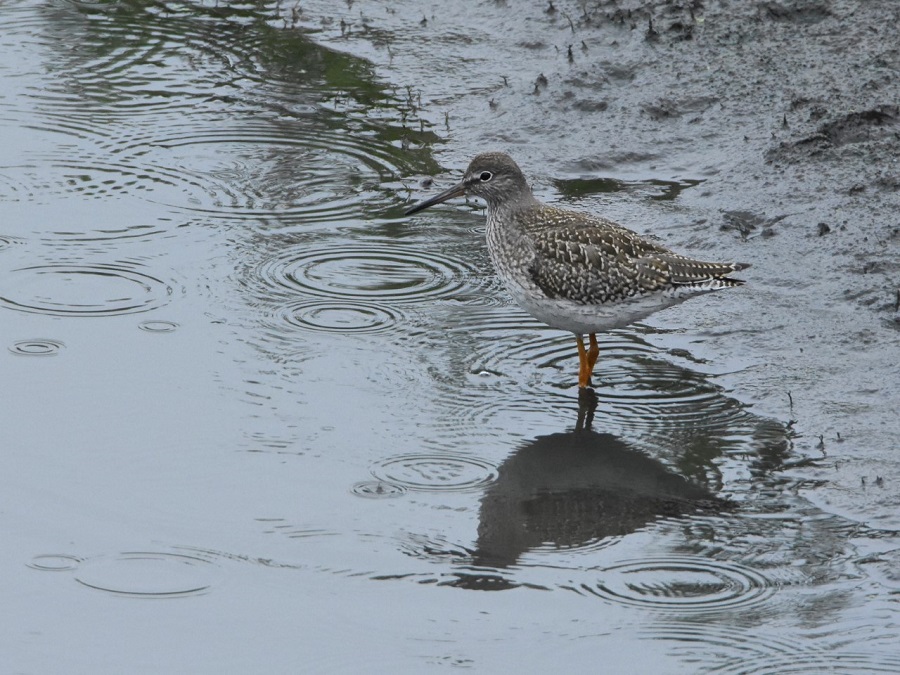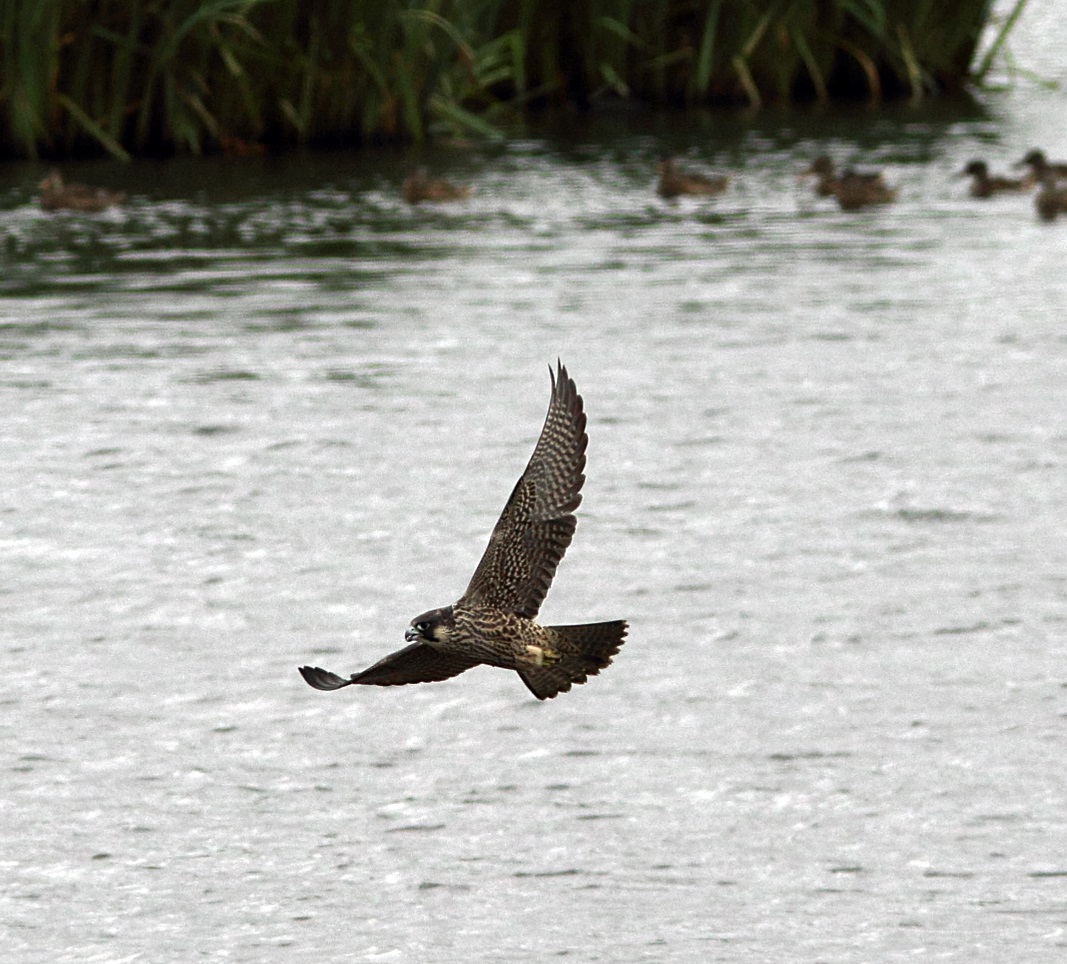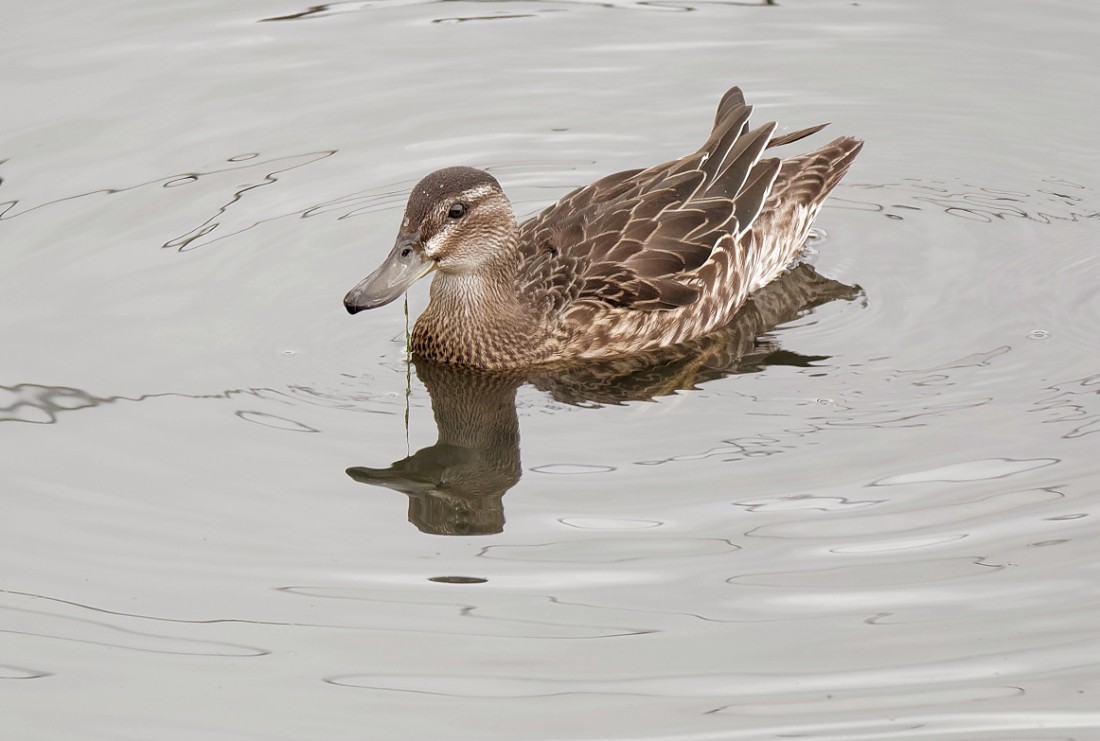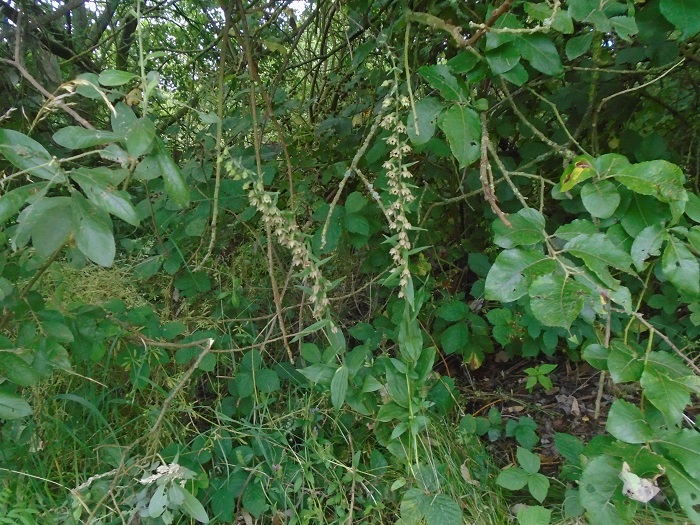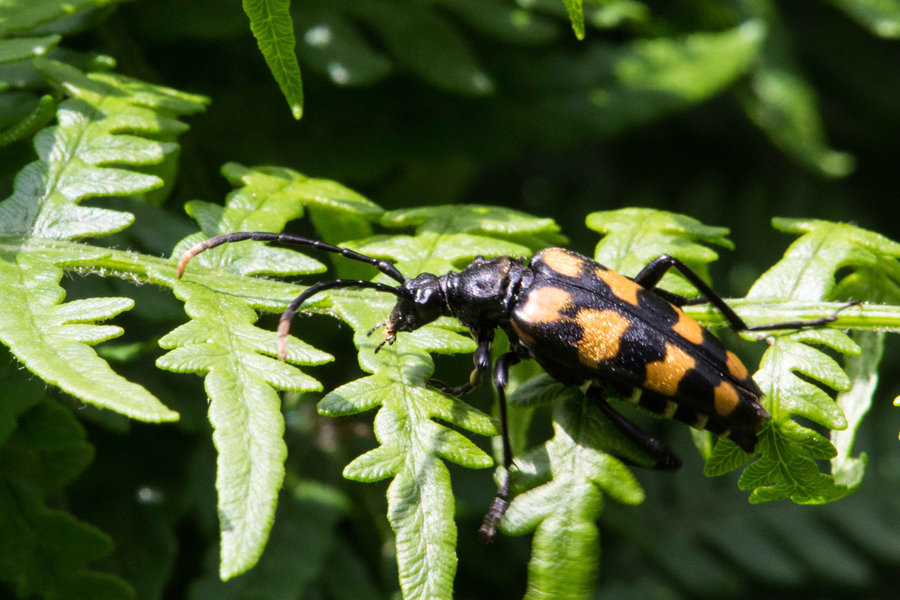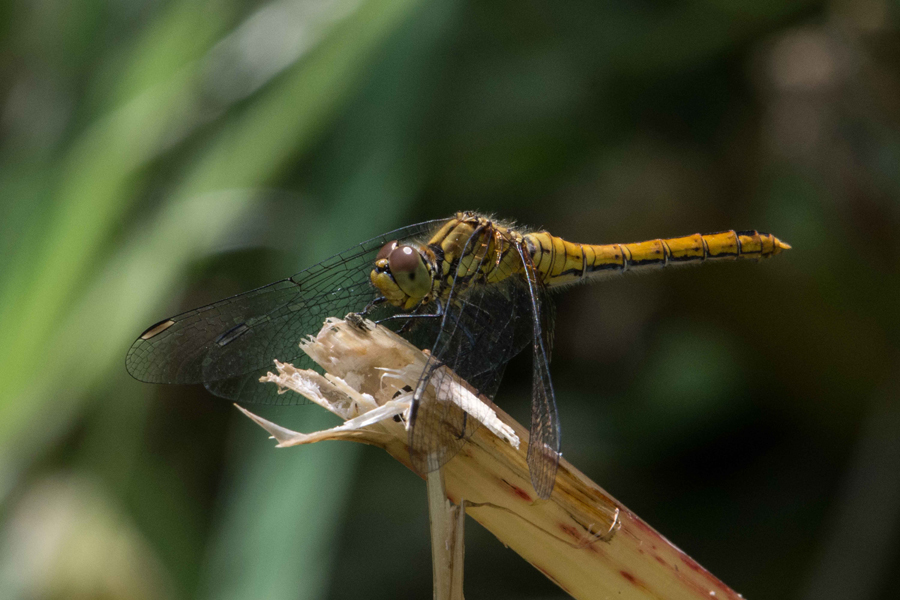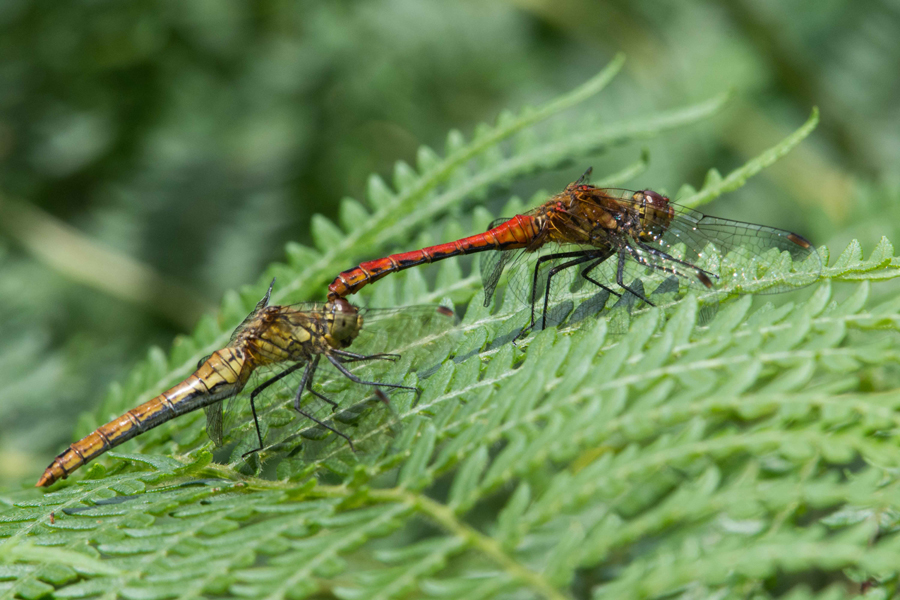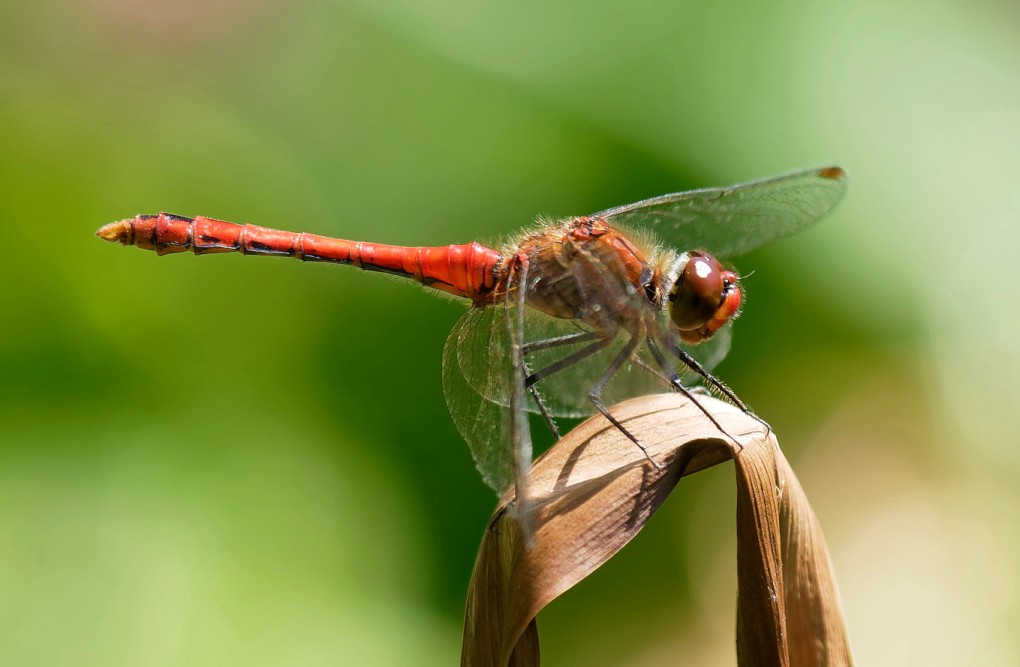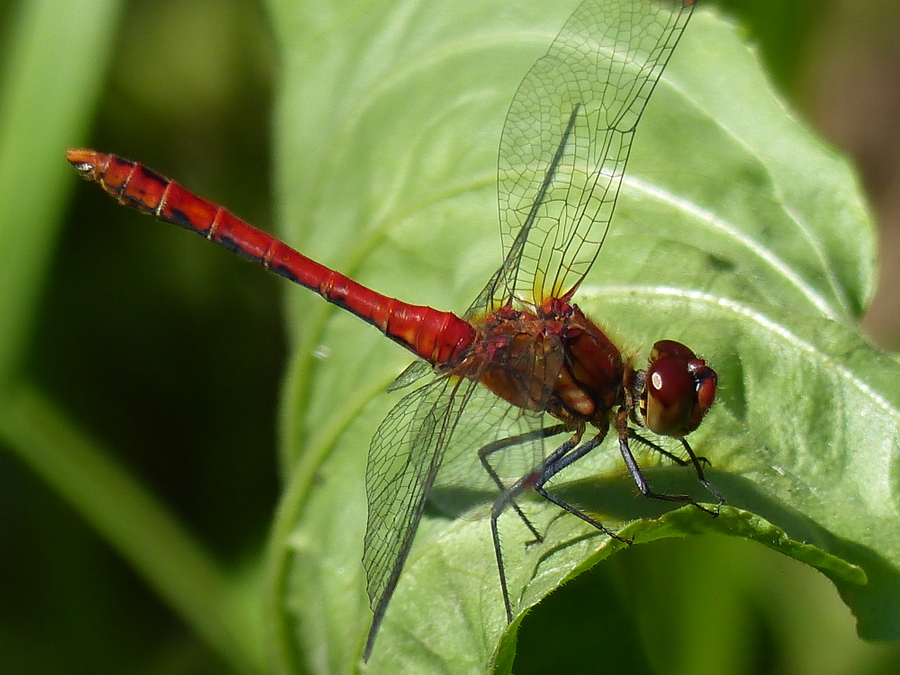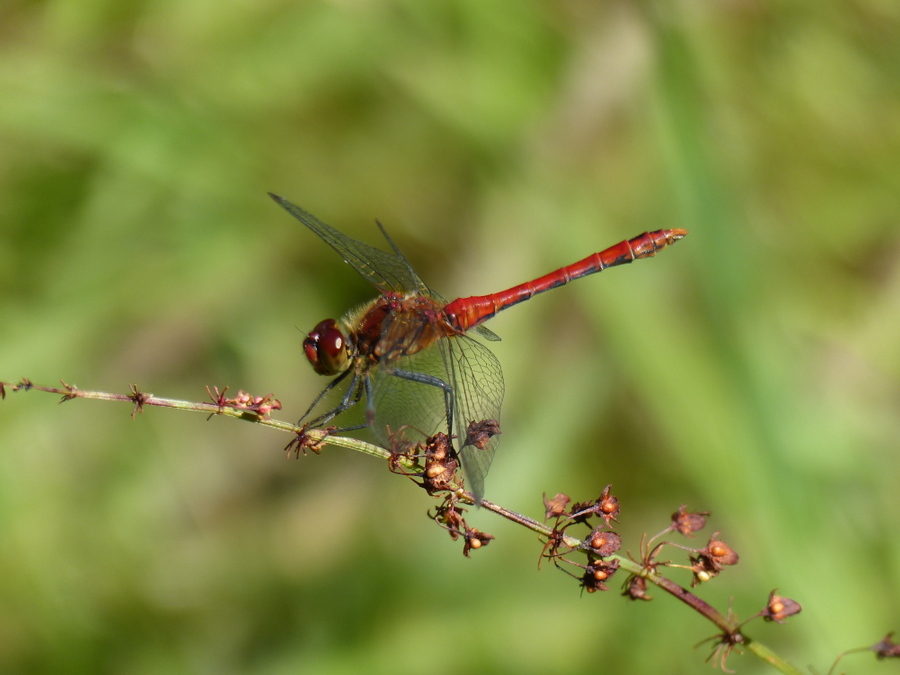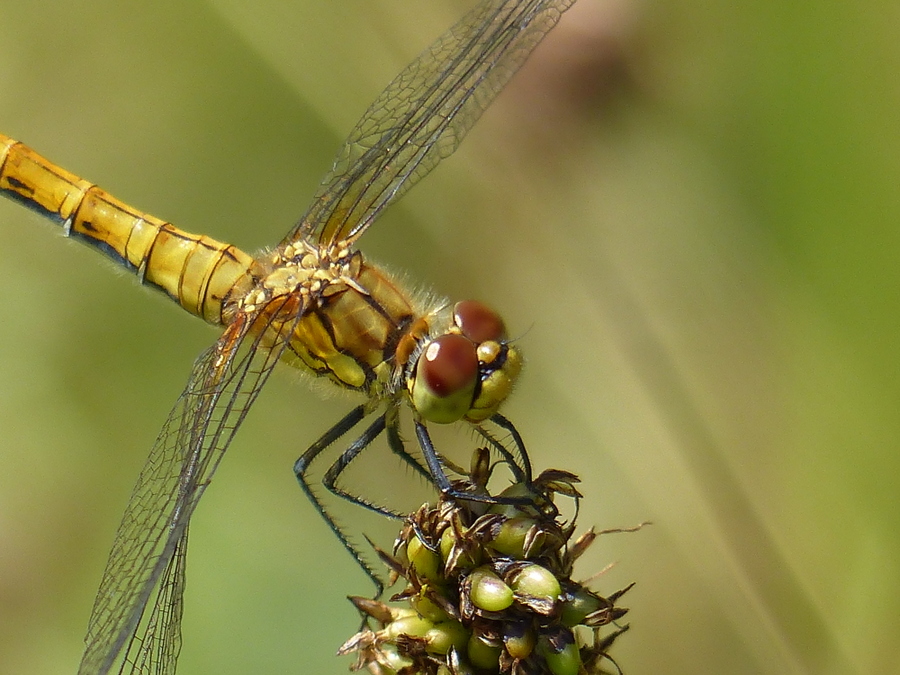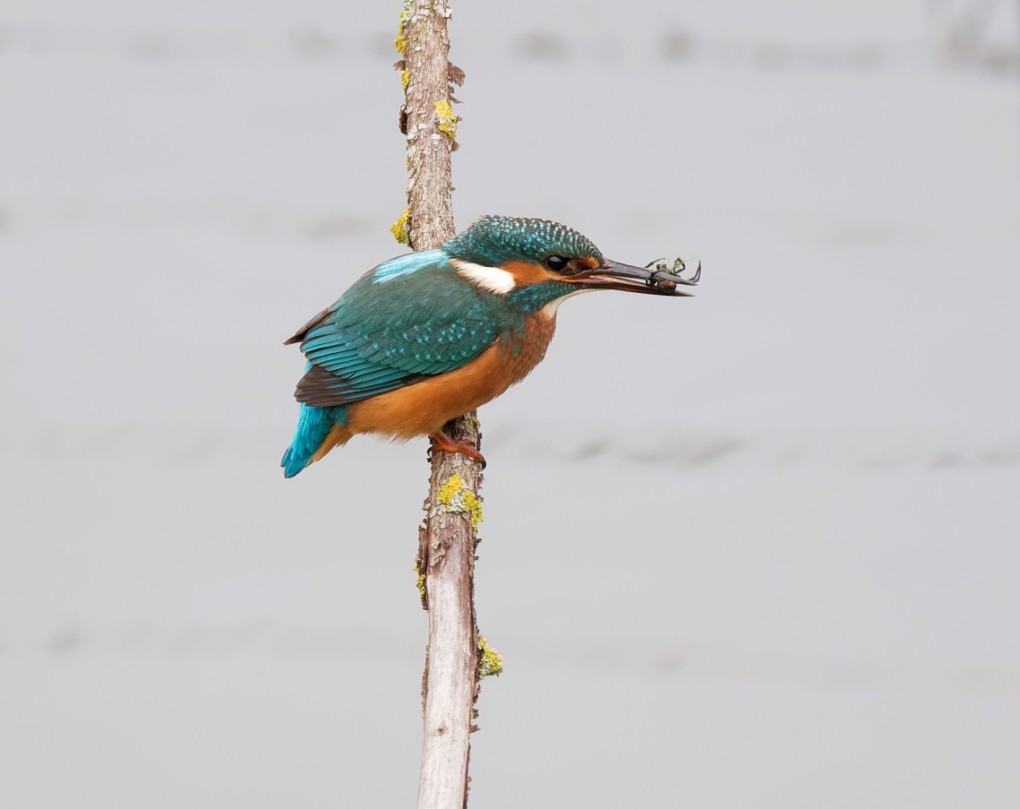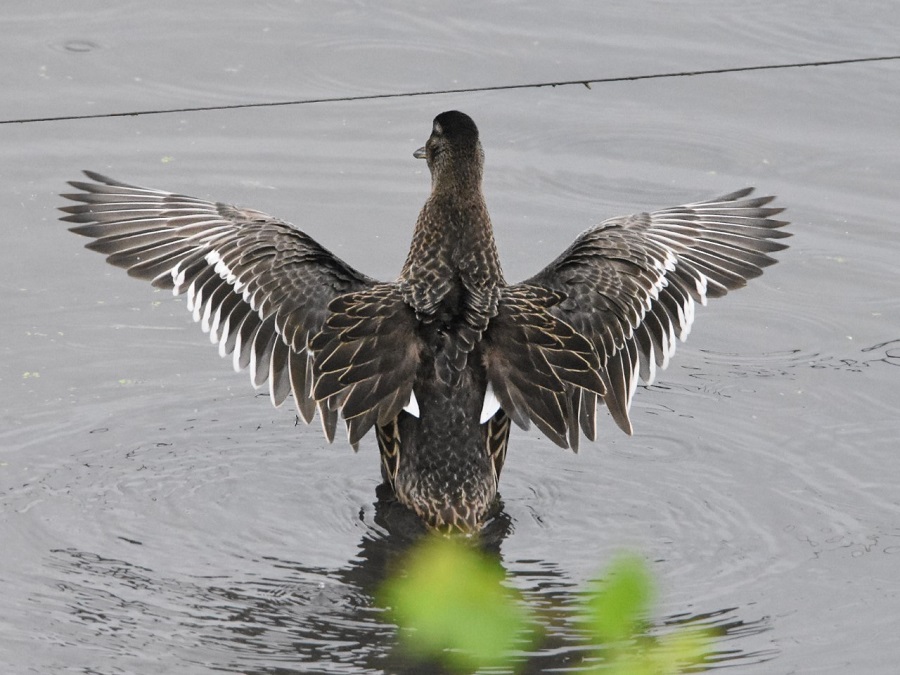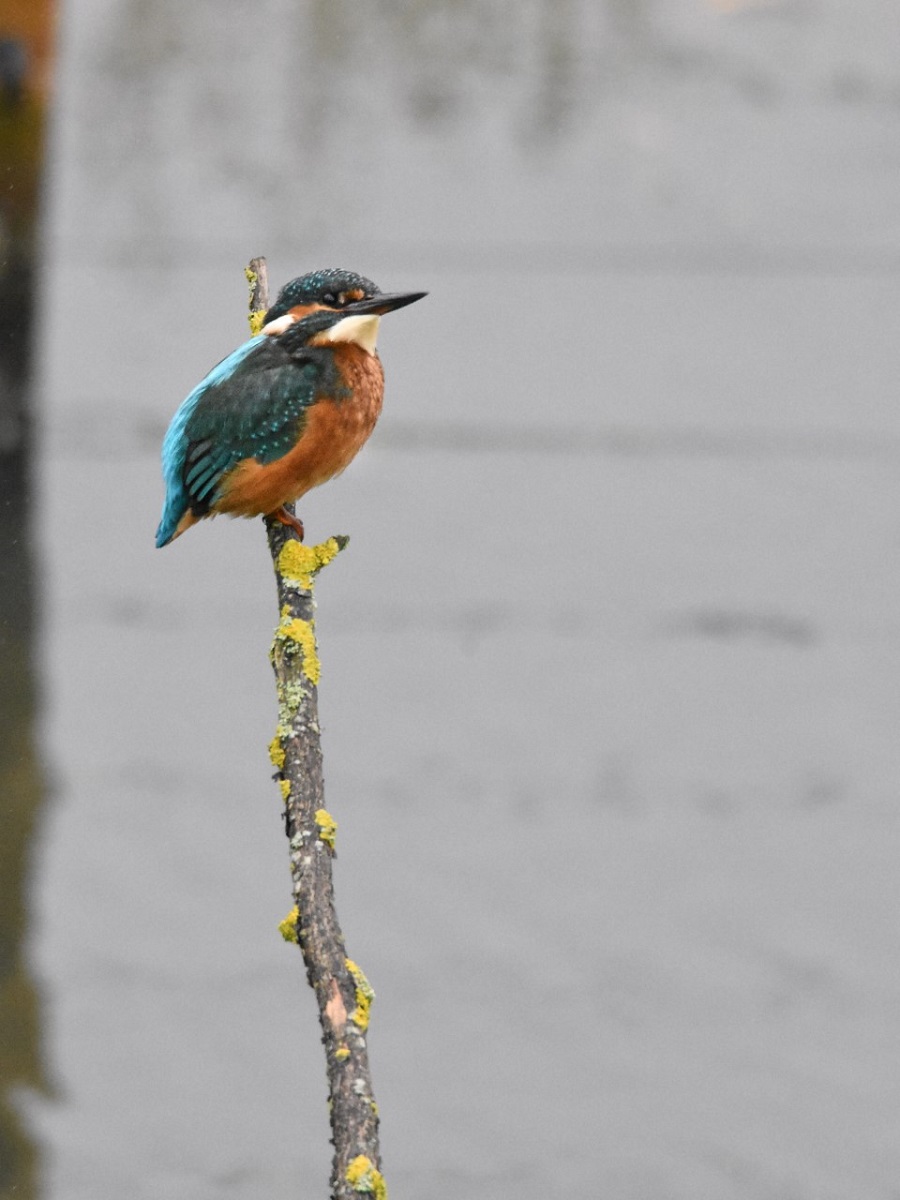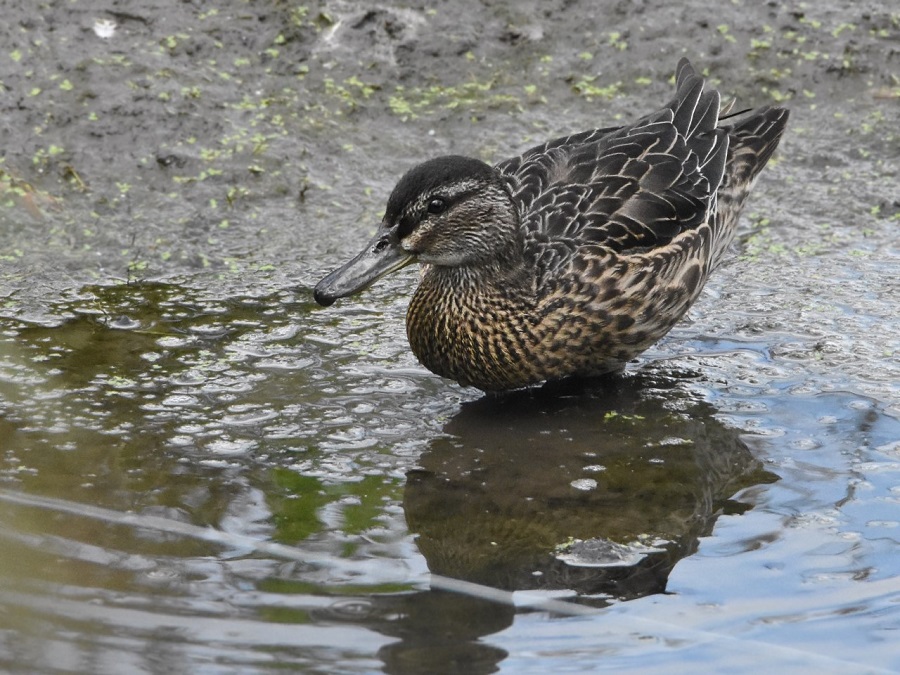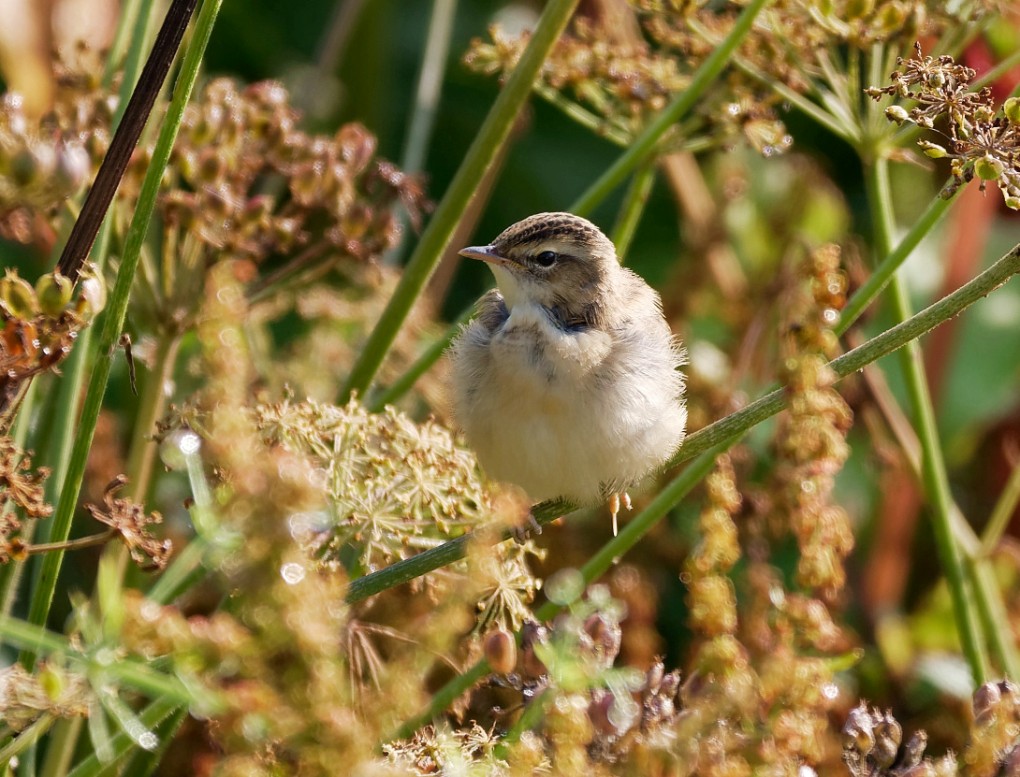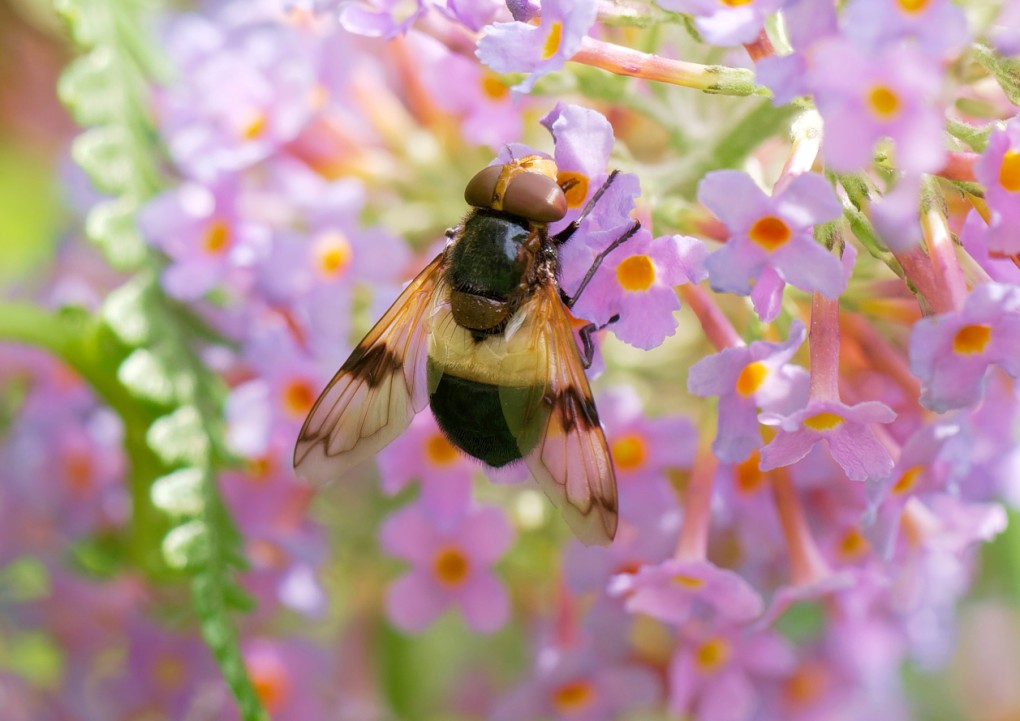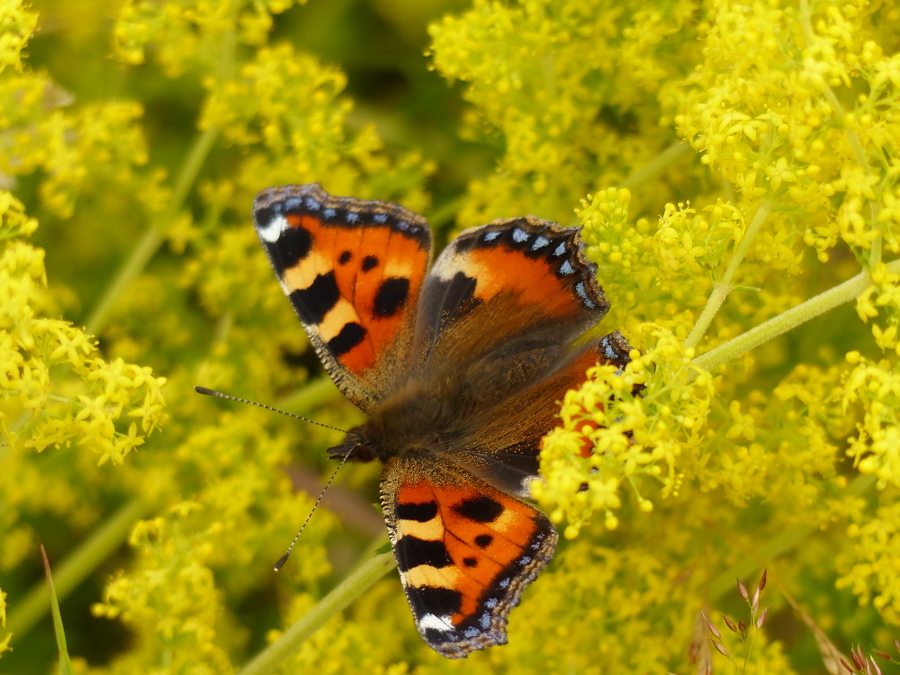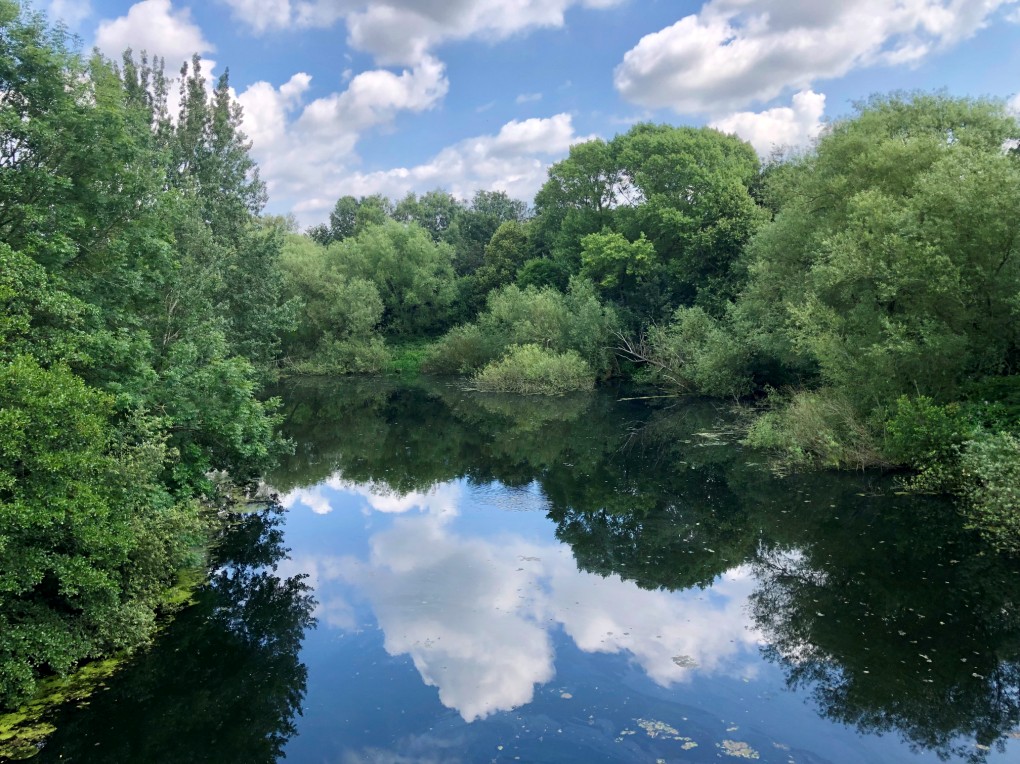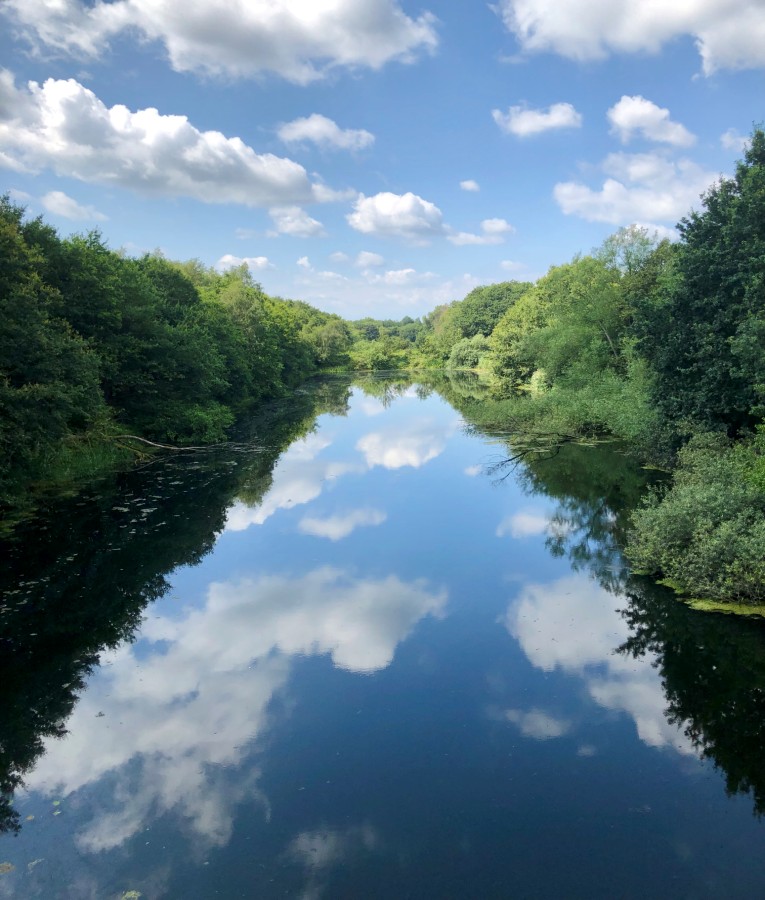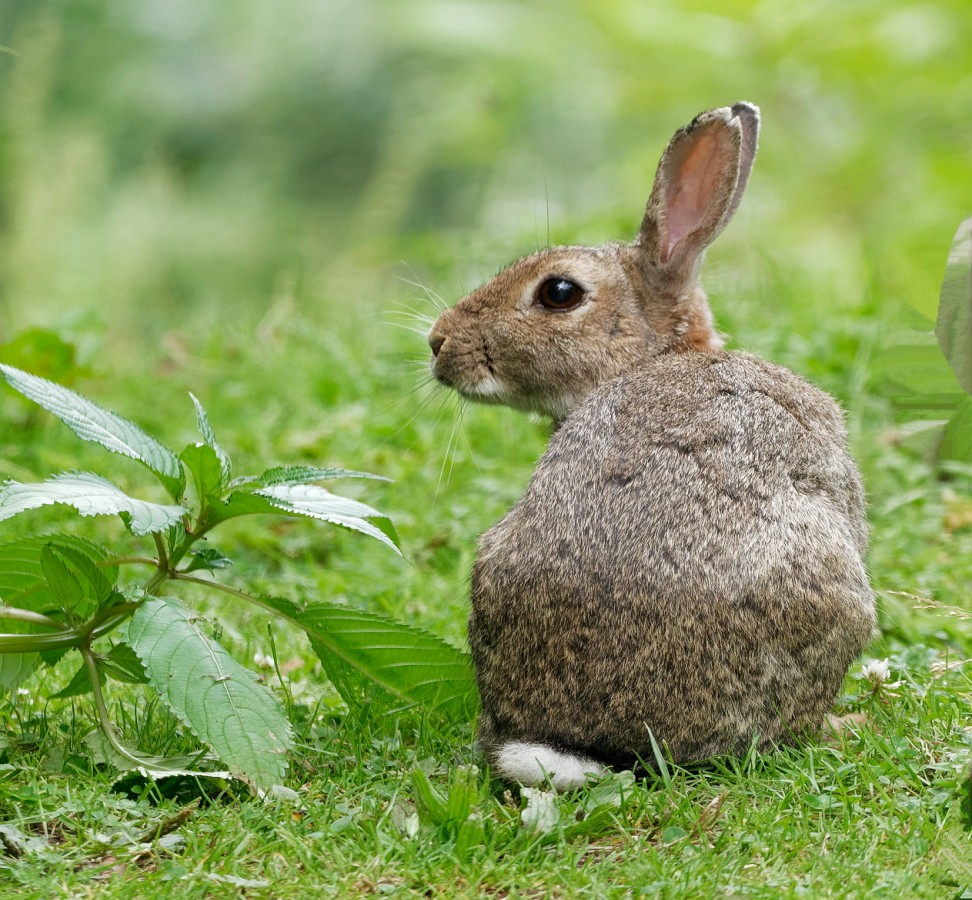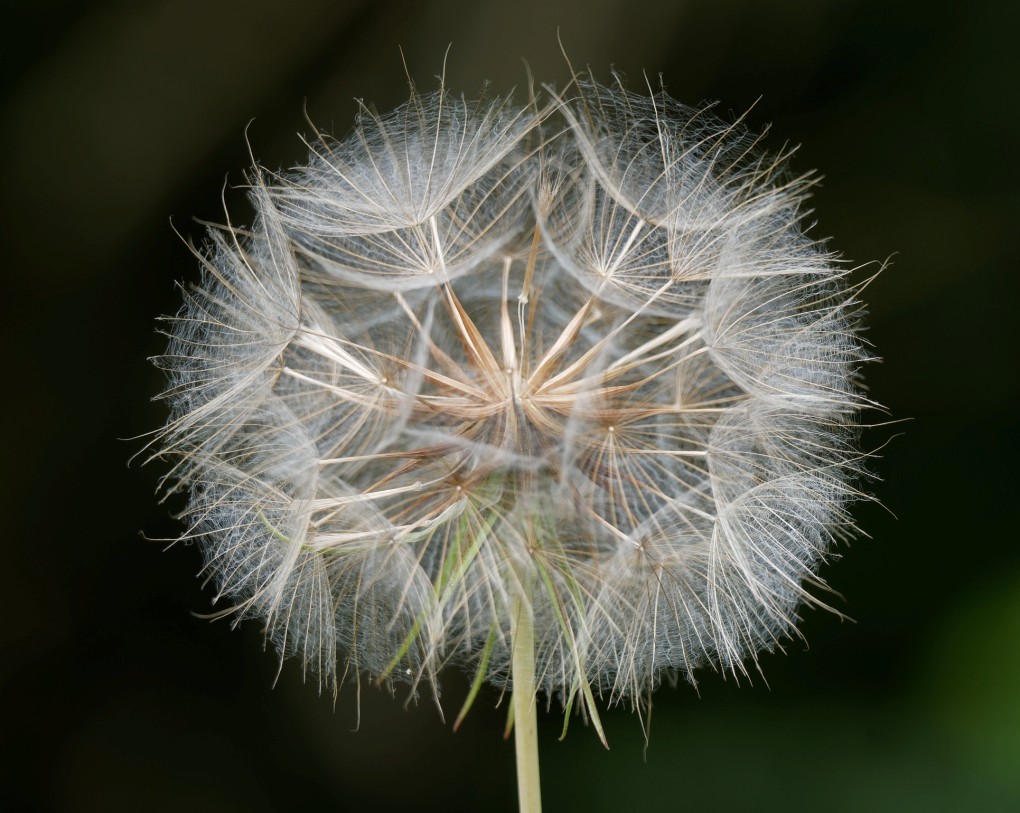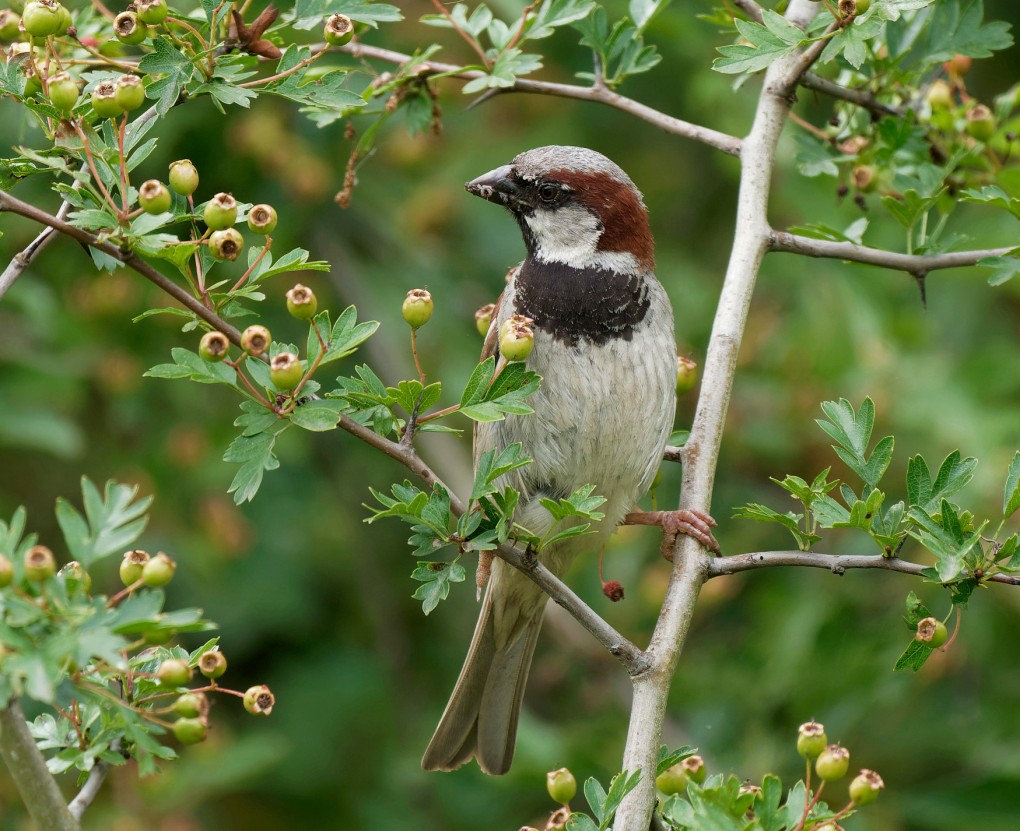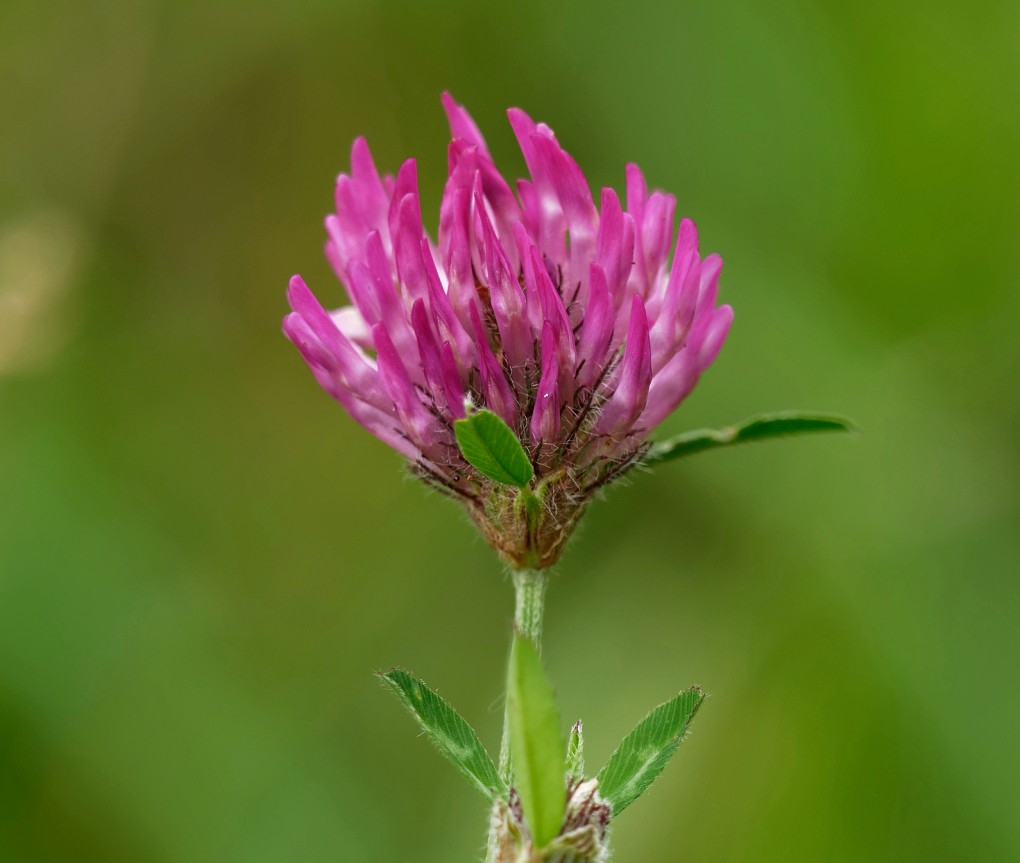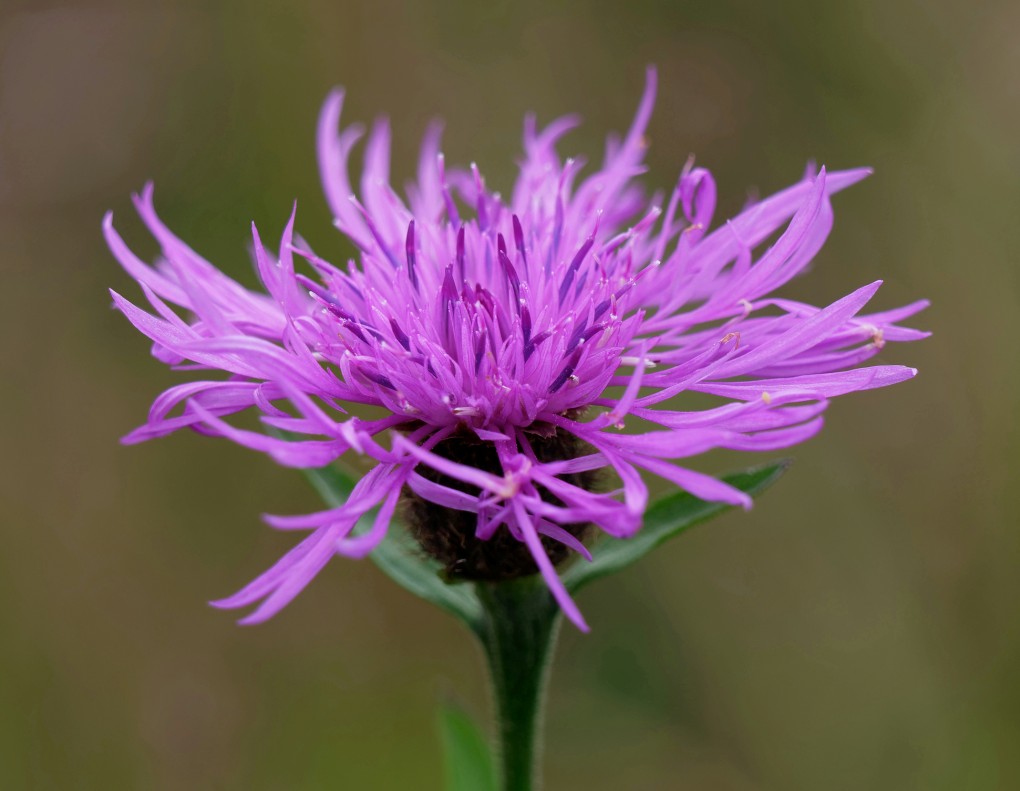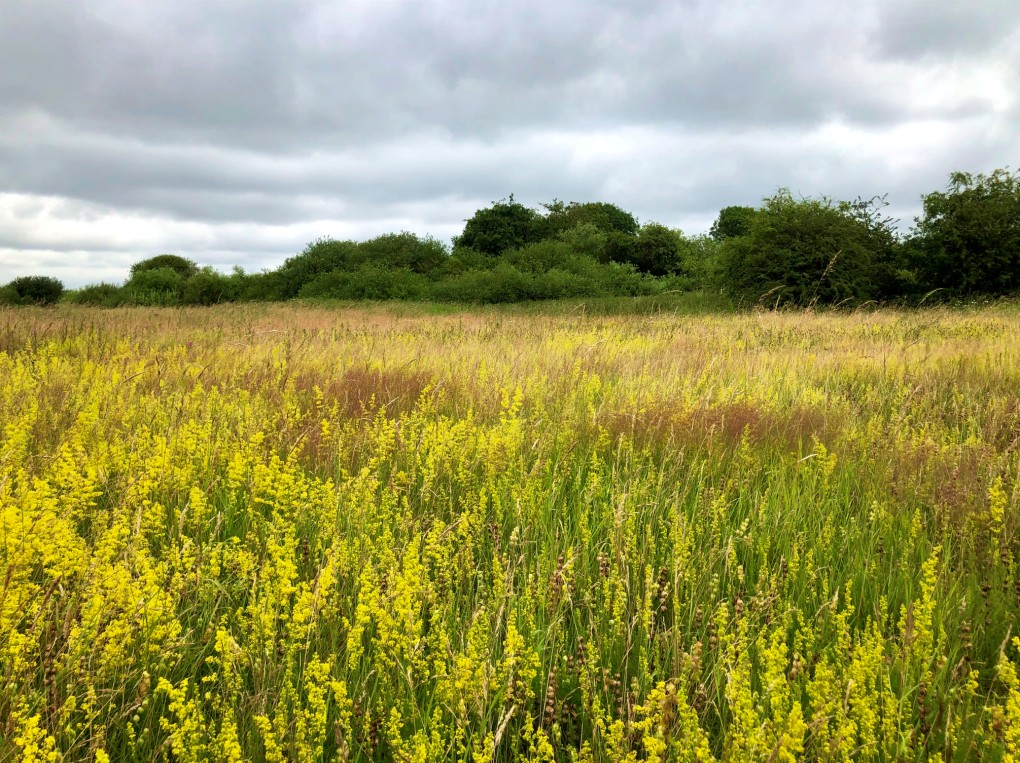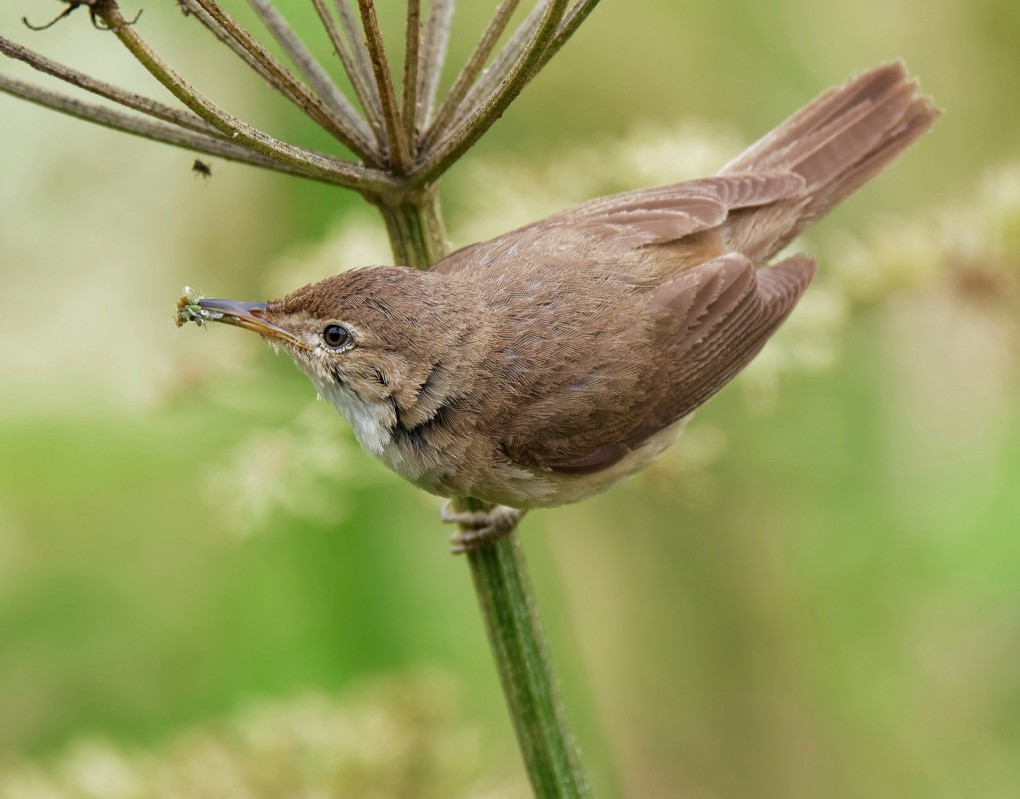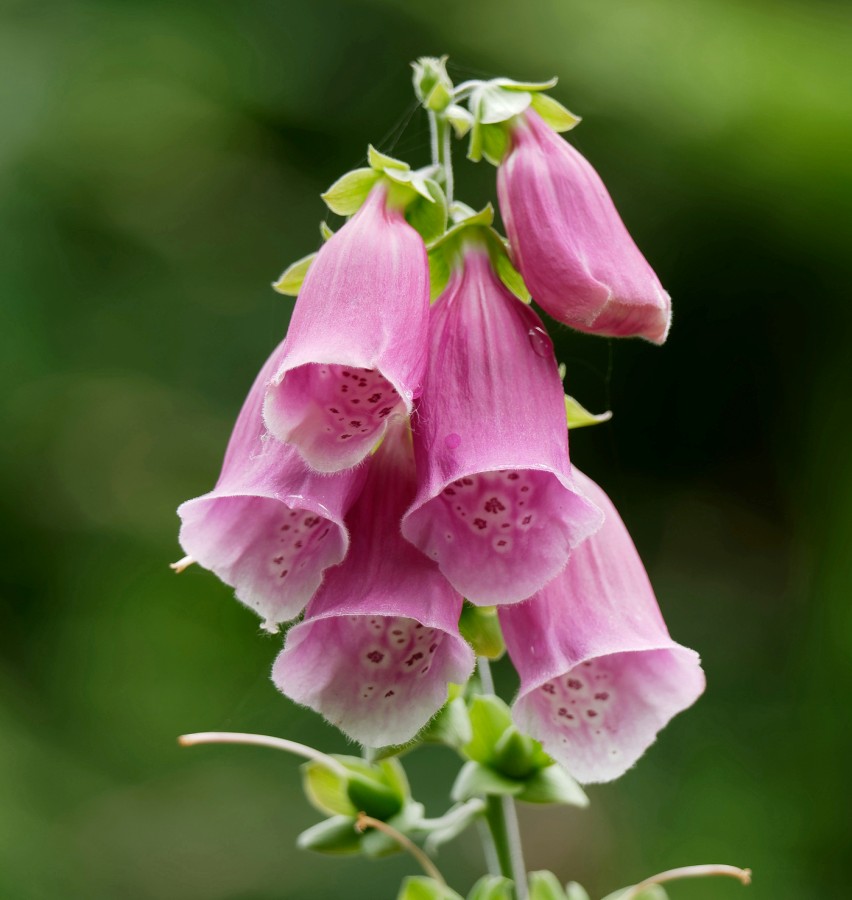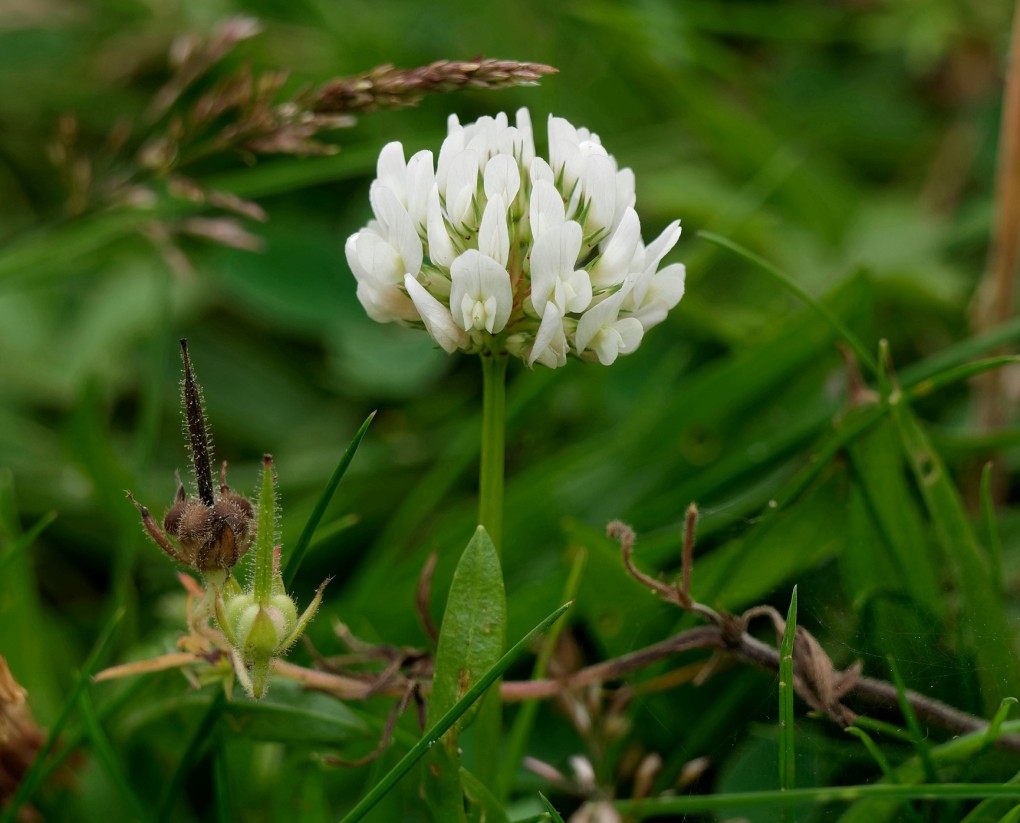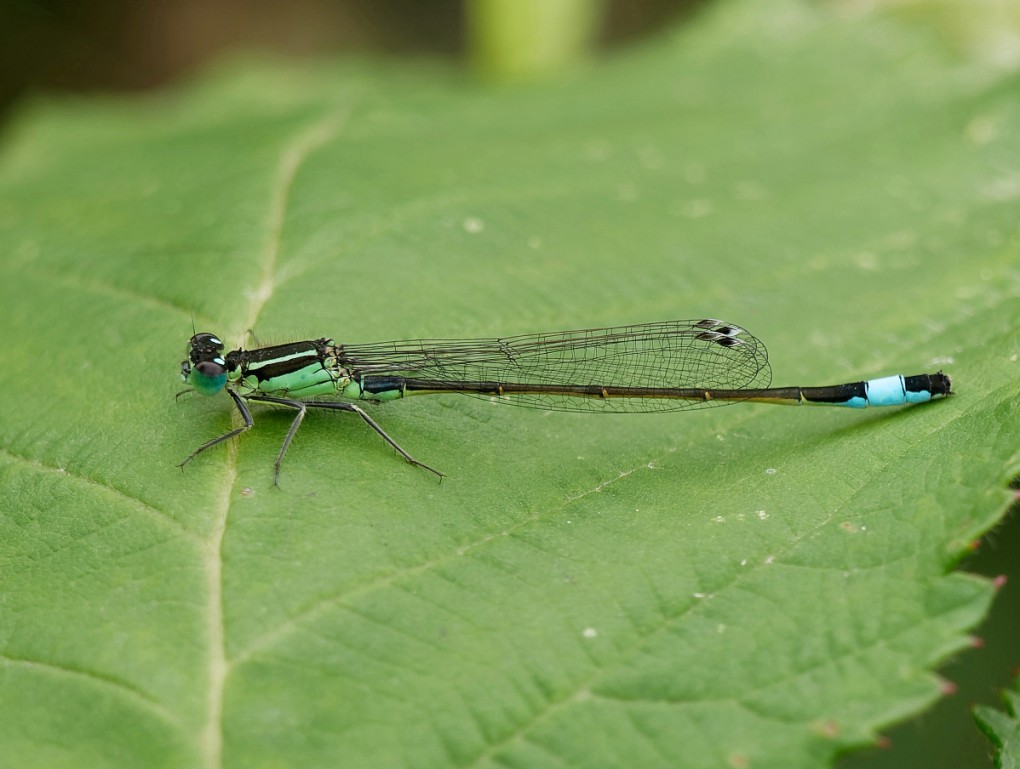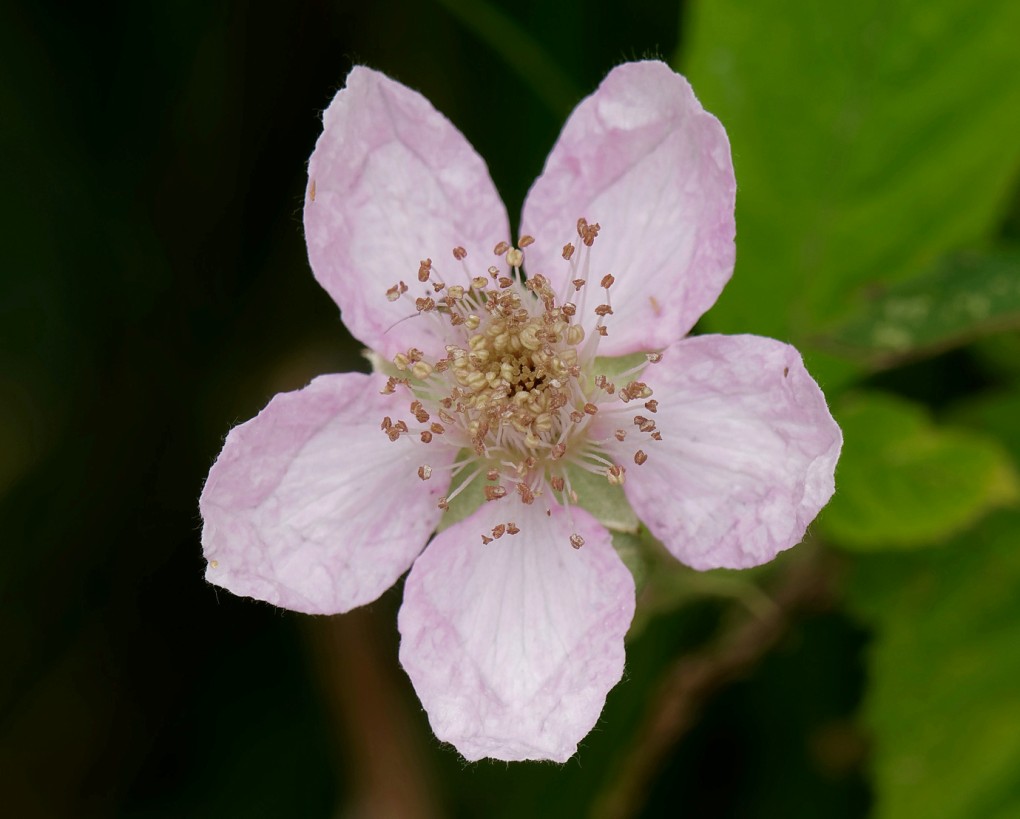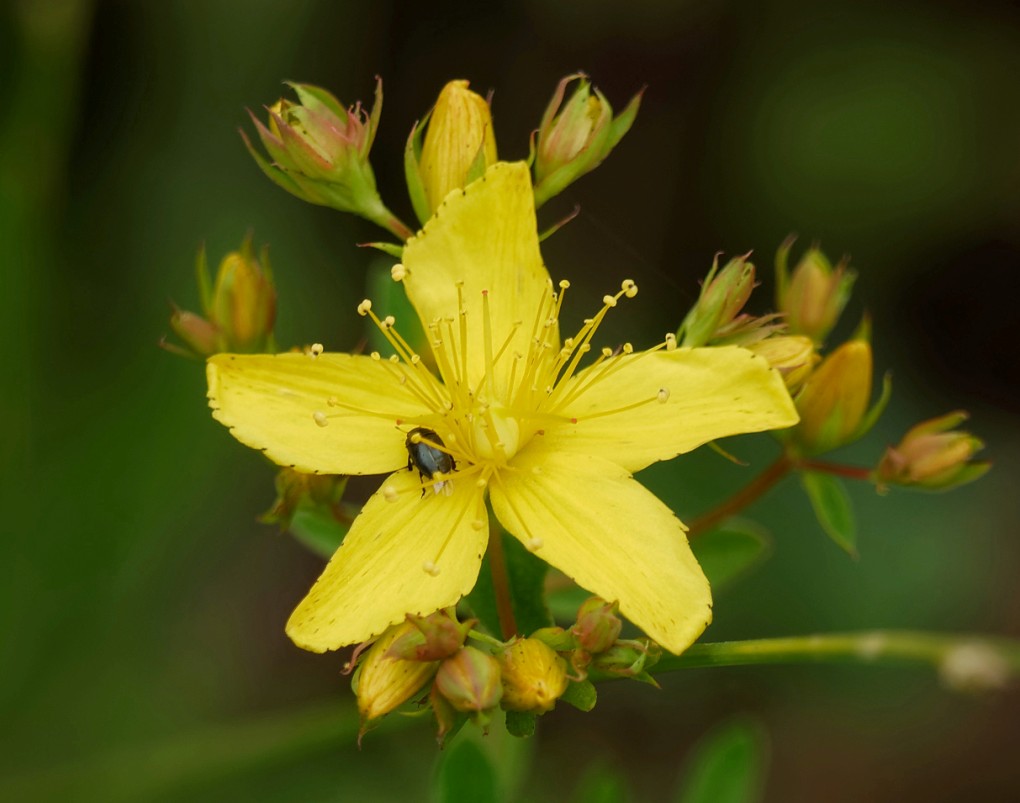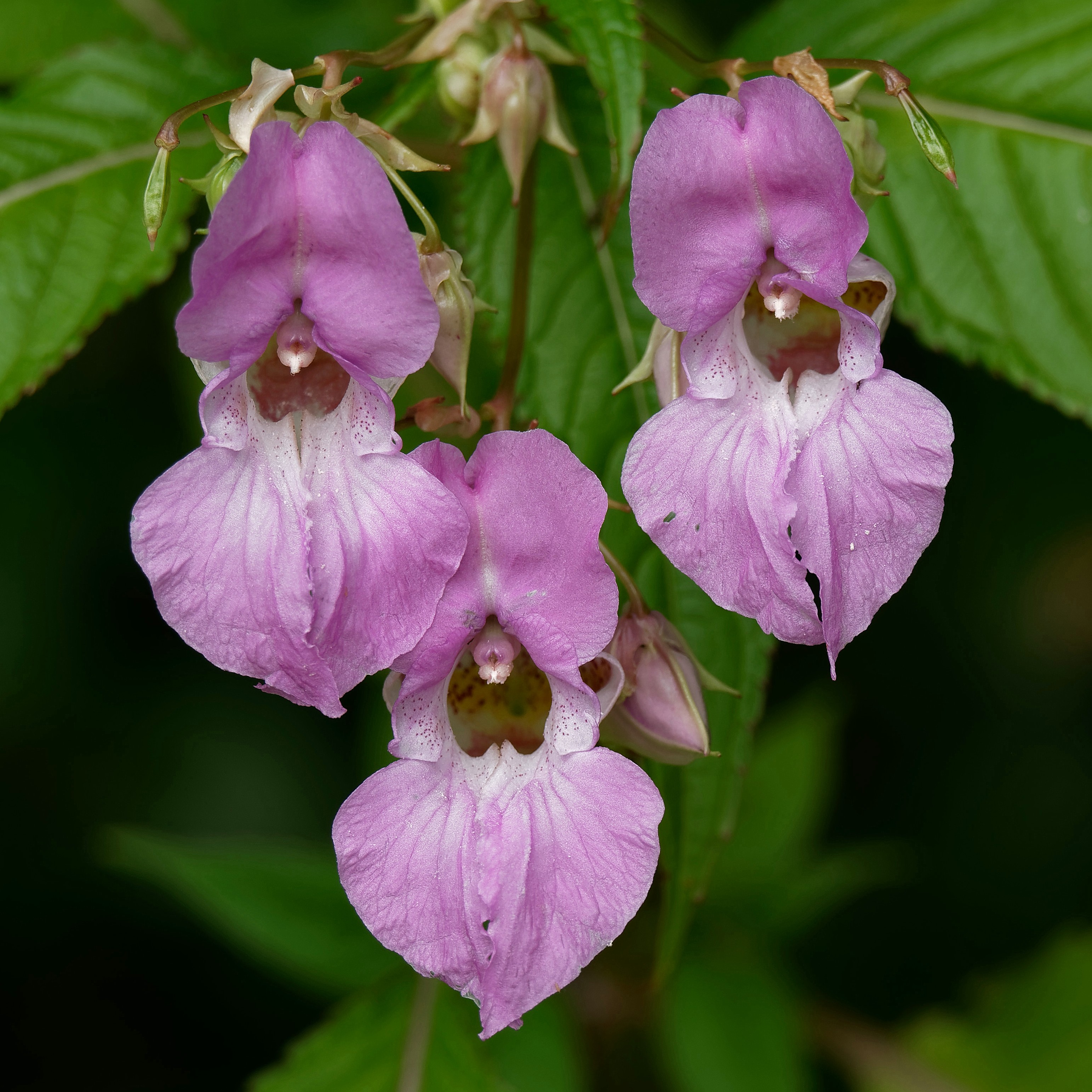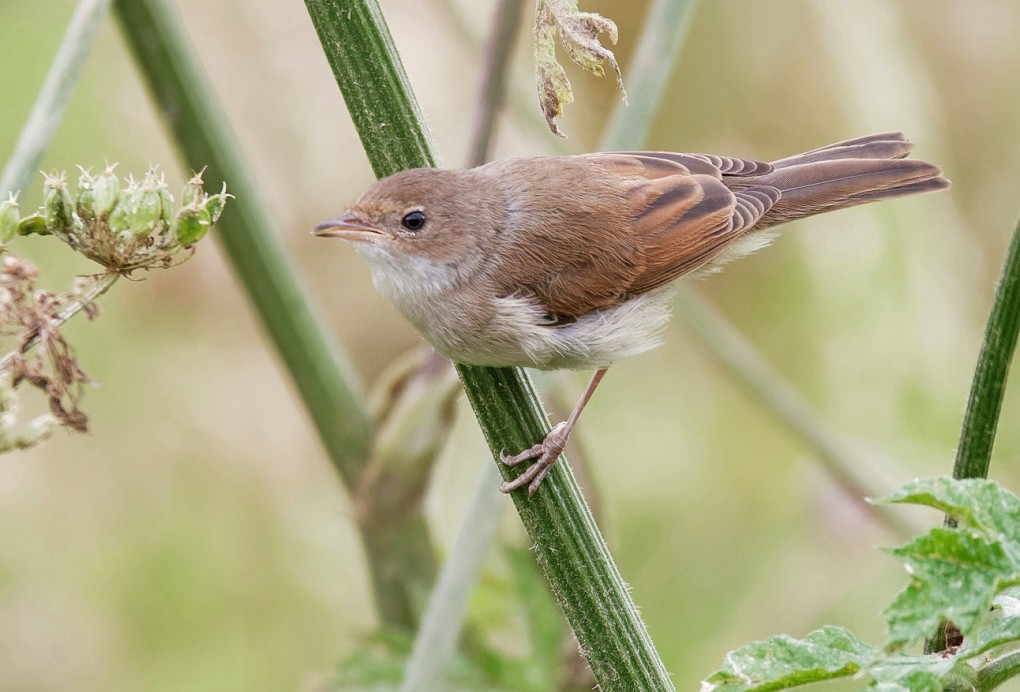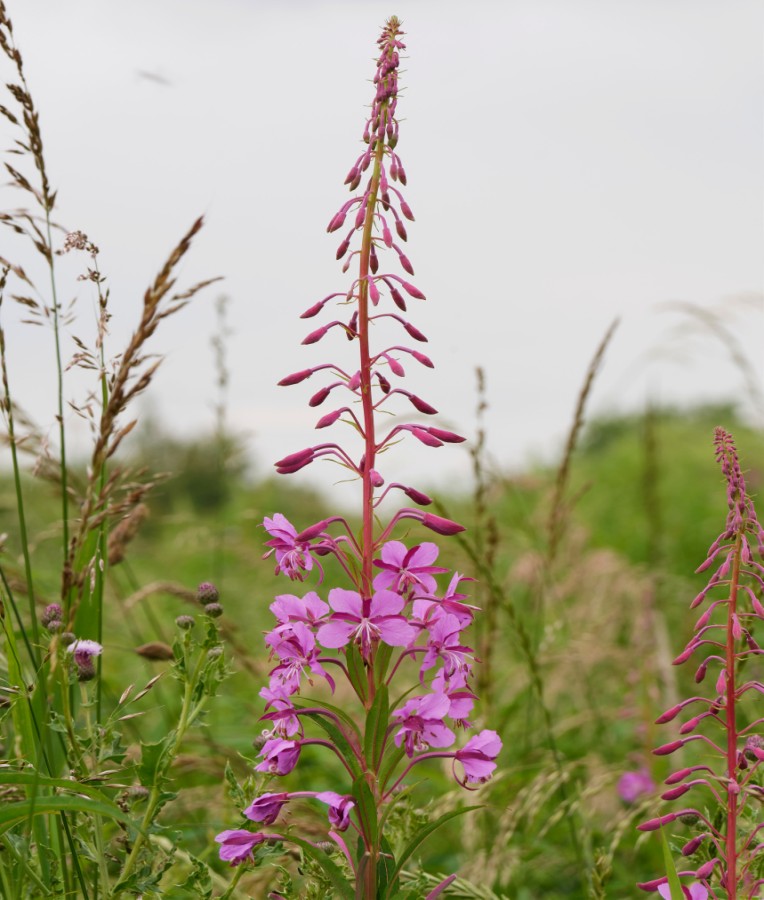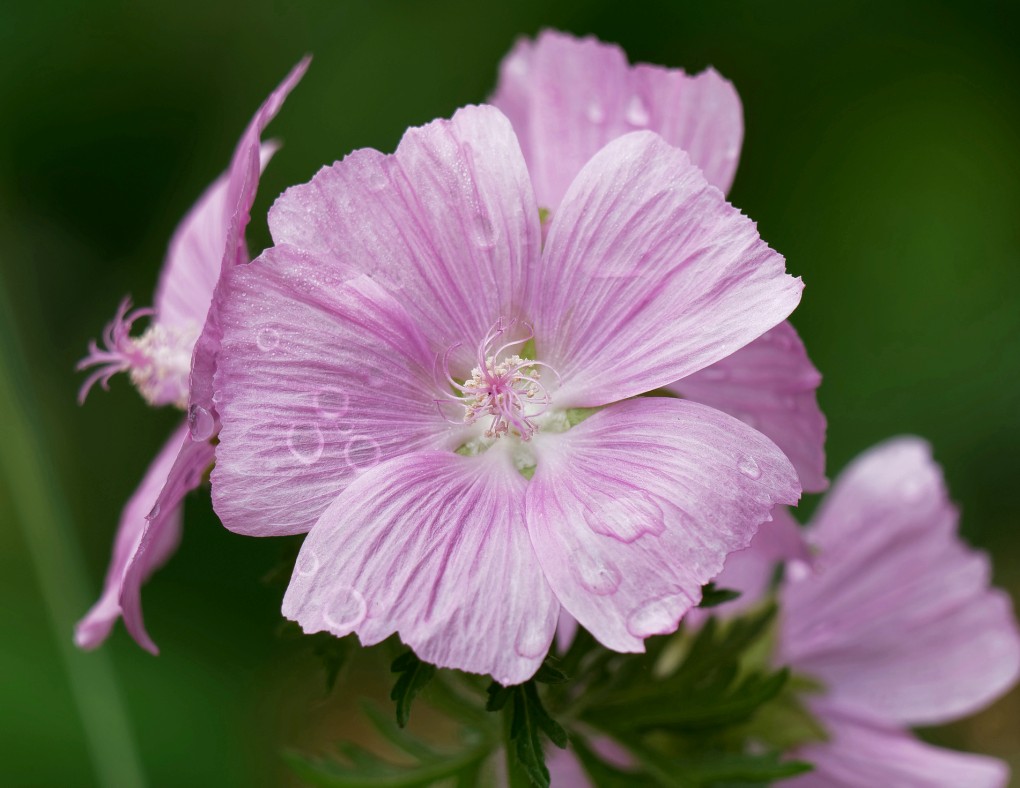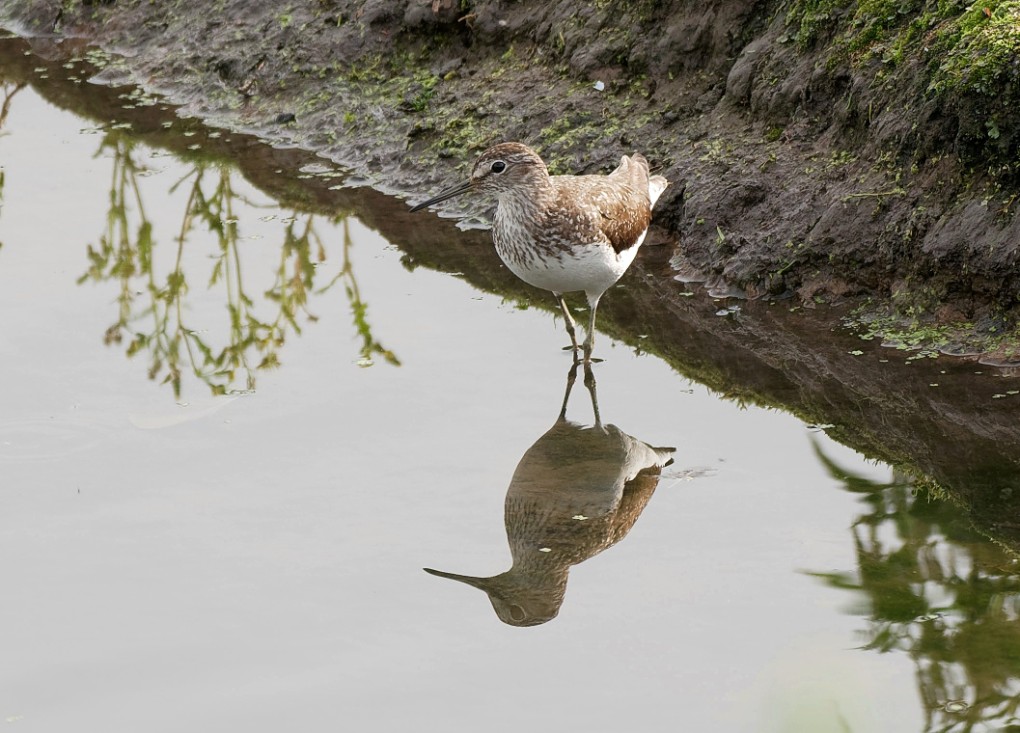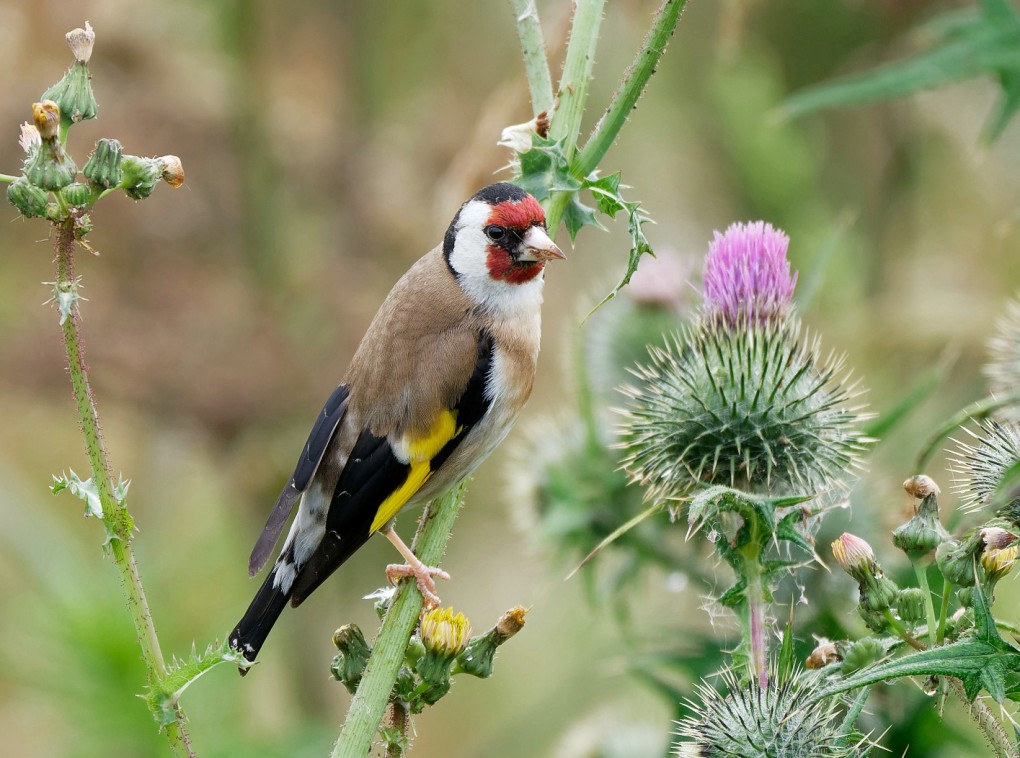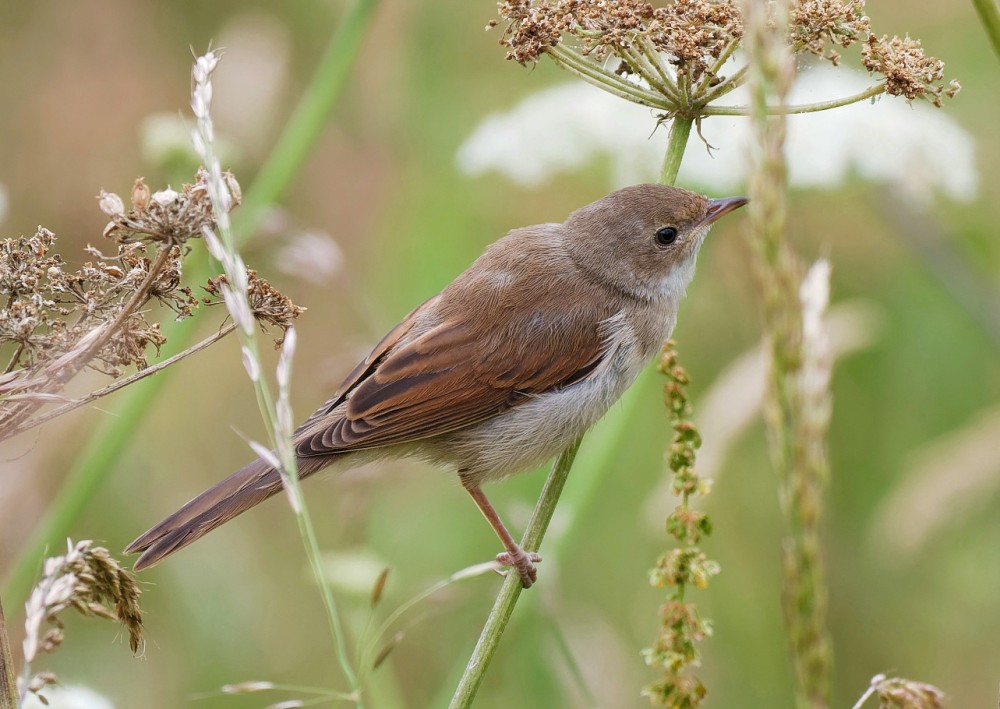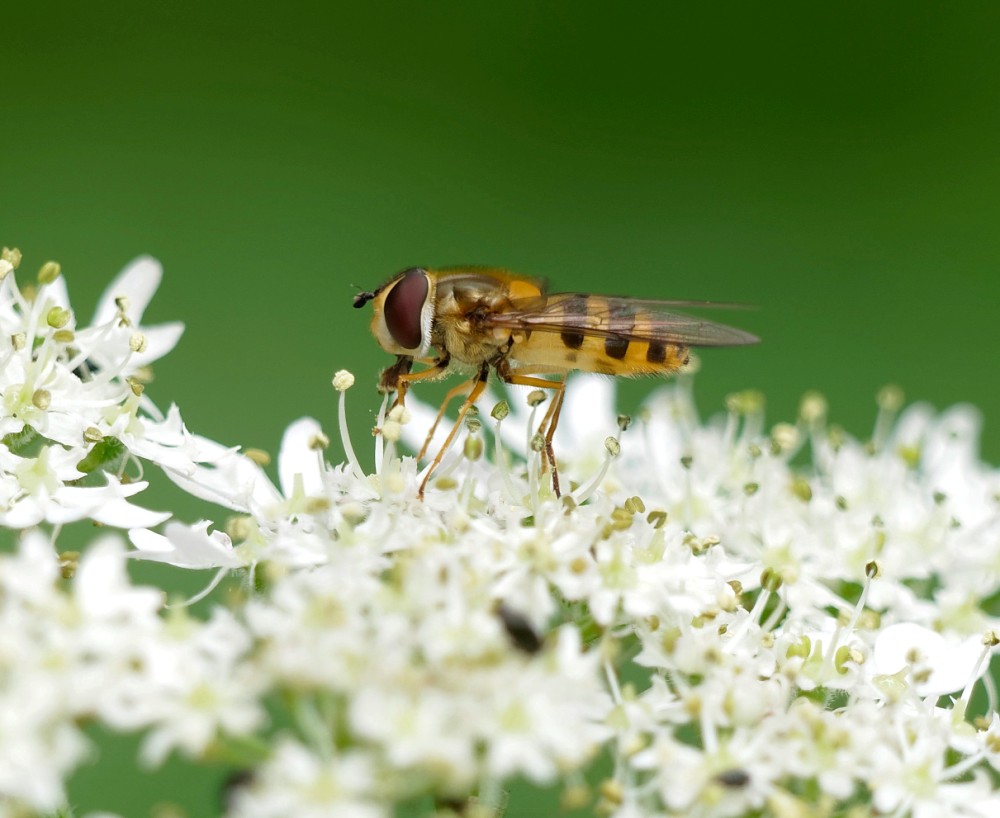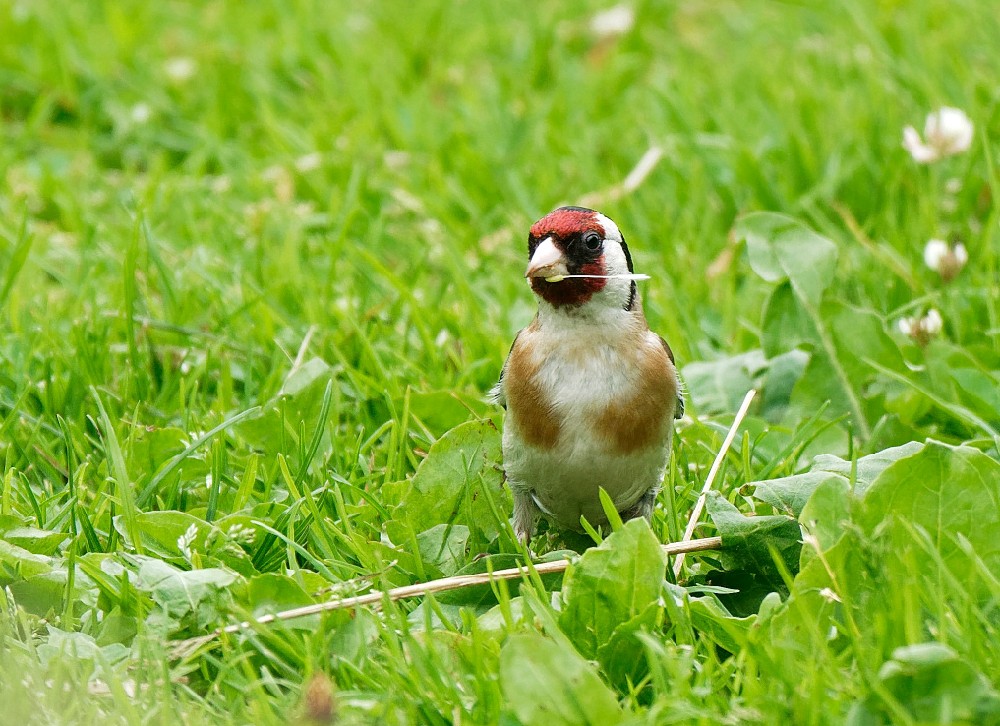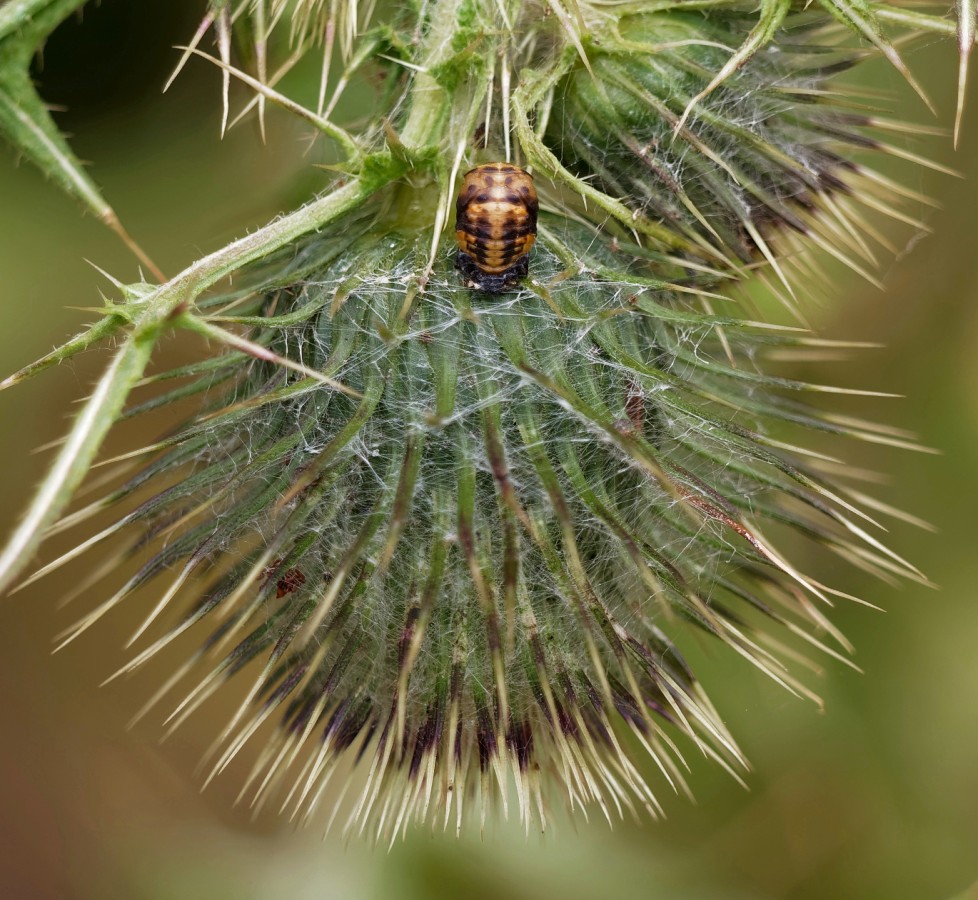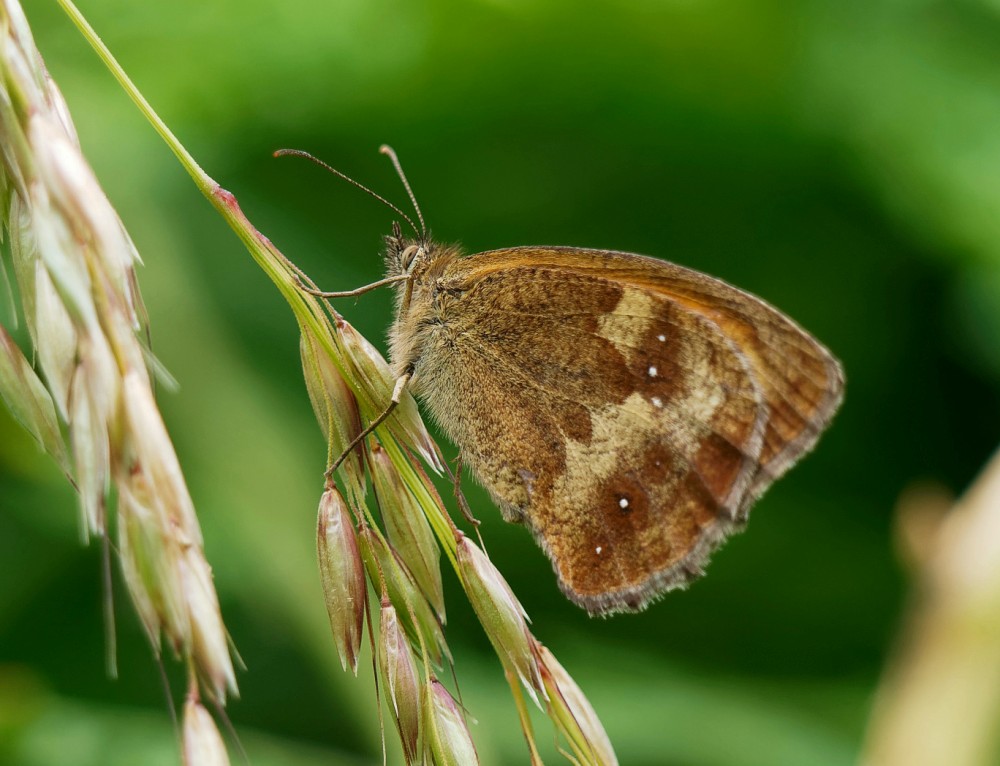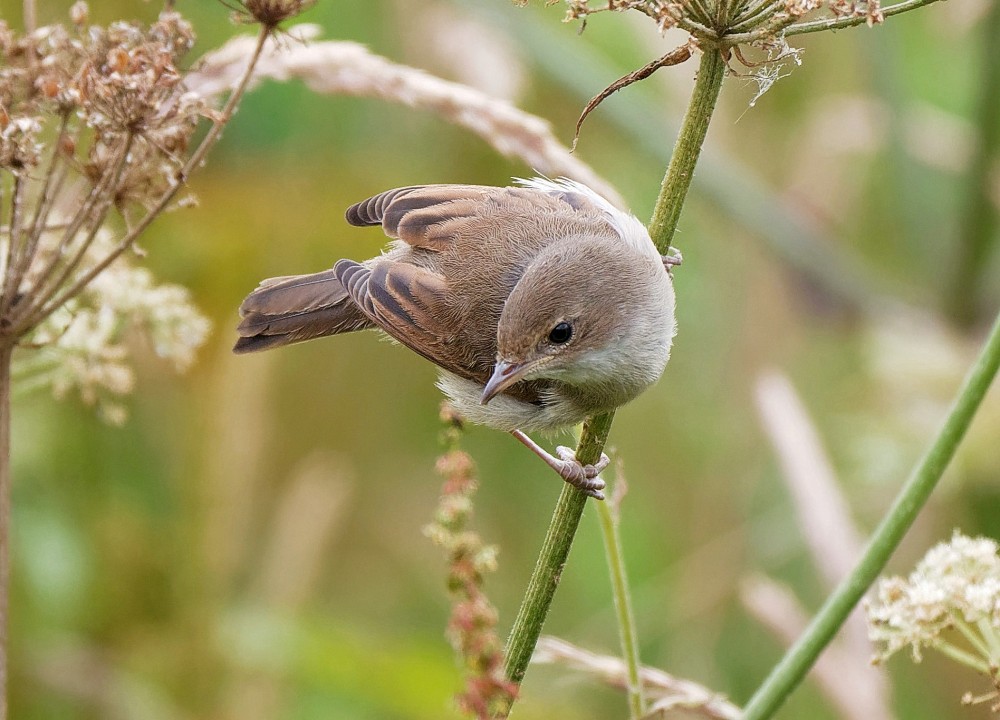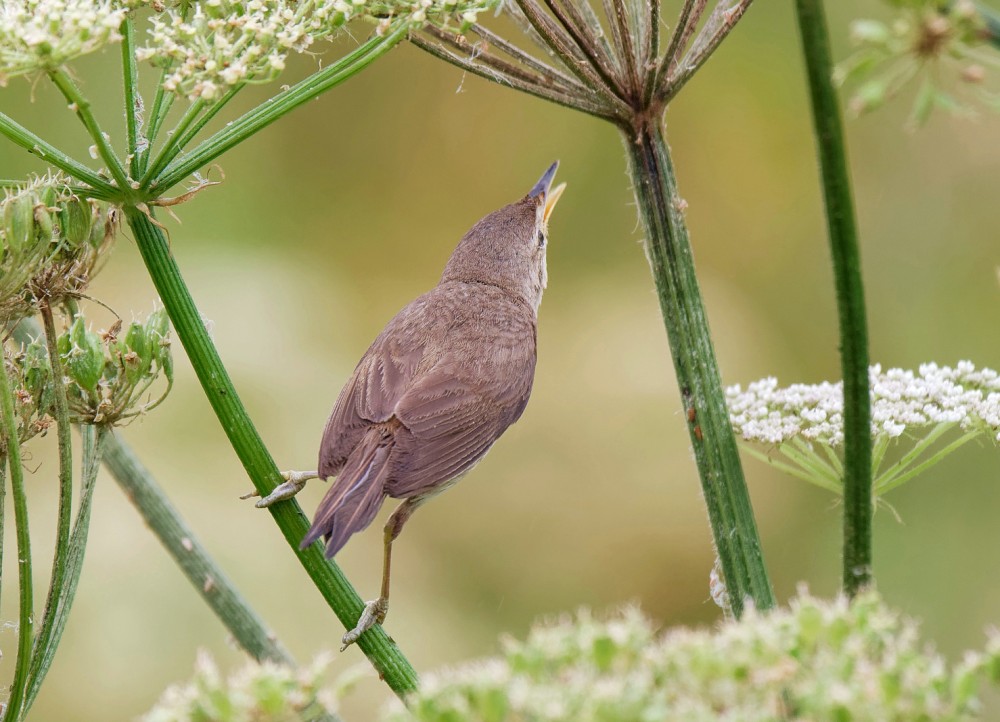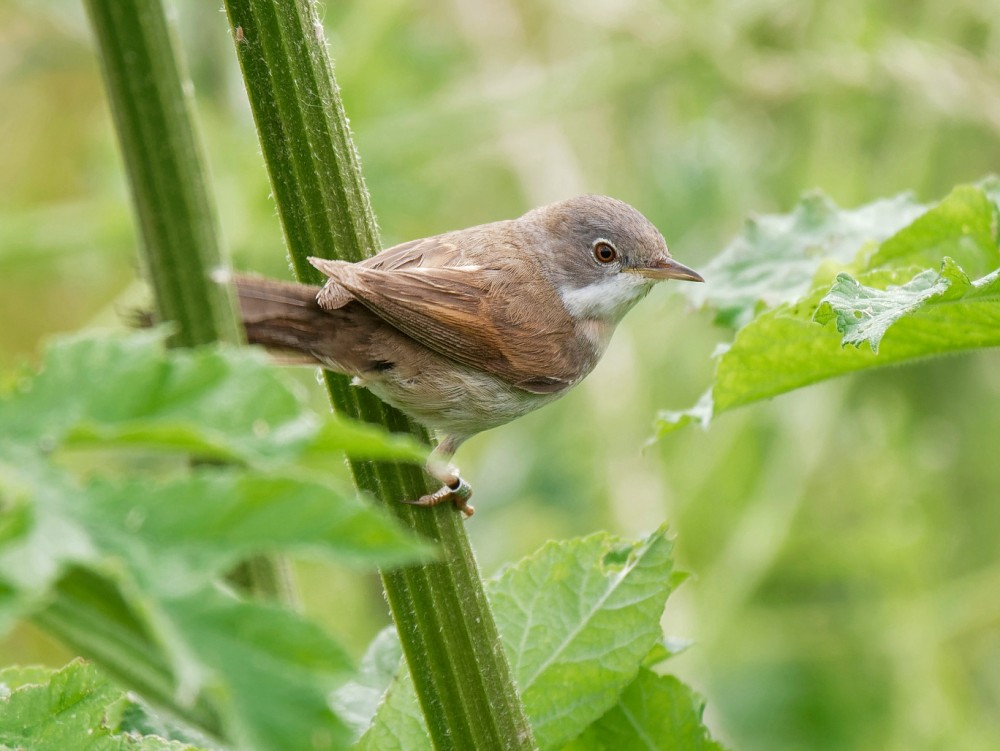Woolston Eyes Monthly Sightings
2019-07-31
On a day of lowering cloud, heavy showers and short spells of sunshine, there was plenty of interest on No.3 bed this morning. With the water levels slowly reducing we should expect to see an increase in passage waders over the next couple of months. Two Green Sandpipers, a Common Sandpiper and eight Black-tailed Godwits were, hopefully, a sign of things to come. Kingfishers and Water Rails are now a daily sight in front of the Morgan Hide, along with hundreds of wildfowl. At least three juvenile Black-necked Grebes were still around but it won’t be long before they’re winging southwards. Same with Swifts, with 70 passing over, they too will soon be leaving us. One of the many reasons the Reserve is so rich in birds at this time of year is the profusion of natural food. Teasels and Thistles were being fed upon by more than 120 Goldfinches, while the ripening berries of Elder, Hawthorn and Rowan will feed the thousands of Blackcaps and winter thrushes which will pass through as autumn progresses. Finally, for the second day running a Green Woodpecker was in the vicinity of the car park, always a good bird to find at Woolston. Photo of a Painted Lady Cheers David Bowman (with David Spencer, Bert Lloyd, John Verdon and Dan Gornall)
Submitted by: David Bowman
2019-07-30
good numbers of Butterflies in the morning and im sure if i had more time there would have been more into the afternoon. good numbers of Painted Lady i saw at least 14 photos of Red Admiral, Peacock, Comma, Painted Lady,Large White, Green Veined White, Speckled Wood, Gatekeeper, Meadow Brown.
Submitted by: Keith Gallie
2019-07-30
A Juvenile Peregrine was Harassing everything in front of the John Morgan hide around 9.30am making good entertainment for me
Submitted by: Keith Gallie
2019-07-29
A variety of dragonflies were active in the sunshine today, including Brown and Migrant Hawkers, Ruddy and Common Darters plus Emerald, Blue-tailed and Common Blue Damselflies.
Photo of a Migrant Hawker on No.2 bed.
Submitted by: Brian Baird
2019-07-27
With the weather turning from sultry and hot to overcast and drizzly, we were hopeful that we might get the odd wader dropping in this morning. Arriving at 6.30 am, we found a couple of Black-tailed Godwits and a Green Sandpiper on the Morgan Hide scrape, along with the long-staying juvenile Garganey. Small numbers of Swifts, Swallows and Sand Martins then passed through, while one of the regular Kingfishers put in a couple of appearances. A Redshank then flew in, while co-ordinated counts around the bed produced totals of 100 Goldfinches, 70 Greenfinches and 10 Black-necked Grebes (1 adult and 9 juveniles). A couple more Black-tailed Godwits had arrived before our final bit of wader activity was provided by four Dunlins, brought down by the increasingly heavy rain, which were still feeding actively on the scrape as we left at lunchtime. Photo of a Common Snipe Cheers David Bowman (with David Spencer, Helen Wynn, Brian Baird, Brian Martin and Daniel Owen)
Submitted by: David Bowman
2019-07-26
A steamy morning produced some interesting sightings yesterday. The feeding in the shallow water on No.3 bed is attracting some large flocks of water birds, with the estimated.550 Gadwall and 320 Coot dominating the open water. With water levels dropping to expose nice muddy edges, ten species of wader have been recorded this week, with Black-tailed Godwit, Green Sandpiper, Little Ringed Plover, Curlew, Snipe and Lapwings over the morning. An odd sighting was when four juvenile Black-necked Grebes flew in together and commenced to interact in a way we’ve not seen before. Maybe a bit of pre-migratory behaviour, as they must be close to leaving us? The juvenile Garganey continues to give close views, for those of us who enjoy studying plumage details, while Kingfishers and Water Rail are ever-present. Photo of the Garganey and a link to a short video showing the week’s highlights, with most of the above plus Ruddy Darter and a distant glimpse of Red Kite.
To watch David’s video click here…….
or copy the following link into your browser https://youtu.be/fUZUJz7I8lM
Cheers David Bowman (with Daniel Owen, David Spencer and Sue Haddock)
Submitted by: David Bowman
2019-07-24
Not quite as hot today but the temperature was still 24 degrees! Plenty of butterflies in what is becoming a really good year. Highlights were nearly 300 Gatekeeper, 70 plus “whites” of which about 50 were Green-veined, 73 Peacock which have emerged in the last week, and 38 Speckled Wood. Meadow Brown and Small Skipper seem to have peaked but were still present in reasonable numbers. Singles of Large White and Holly Blue added to the variety whilst a single Purple Hairstreak at the entrance to No.3 bed at 2.45 p.m. was unexpected. The second broods of Common Blue and Small Tortoiseshell should be emerging shortly. As regards the latter species Les Jones reported large numbers (over a hundred) on Holly Bush Lane just to the north of the reserve in the last few days. The juvenile Garganey was showing well in front of the John Morgan Hide together with 6 Black-tailed Godwits. Photo; Broad-leaved Helleborines on Butchersfield Tip
Submitted by: Dave Hackett
2019-07-23
It was a steaming hot morning at Woolston Eyes today but still plenty of good sightings made. Collective records included: the juvenile Garganey still looking well-settled on the Morgan Hide scrape, an adult and a juvenile Peregrine hunting together over No.3 bed, an excellent count of 320 Coot, two Kingfishers, a Raven, a Hobby, two late, small Black-headed Gull chicks on the scrape, a handful of waders including a Common Sandpiper, a Green Sandpiper, two Black-tailed Godwits, a Snipe and 35 Lapwings, a noticeable increase in butterflies and dragonflies, including 14 Peacocks, 3 Red Admirals, 2 Painted Ladies, 2 Ruddy Darters, 4 Common Darters, 2 Black-tailed Skimmers and 5 Brown Hawkers. Photo of a Ruddy Darter Cheers David Bowman (with Daniel Owen, David Spencer and Brian Martin)
Submitted by: David Bowman
2019-07-22
Photo of a male Ruddy Darter, showing the all black legs and waisted abdomen.
Submitted by: Brian Baird
2019-07-22
The hard work carried out by Daniel Gornall, our RSPB Warden this morning paid immediate dividends for finding dragonflies and damselflies, along the south bank of No. 3 bed. Several species were spotted during the morning and early afternoon including Brown Hawkers, Ruddy Darters a Black-tailed Skimmer, Red-eyed, Common Blue and Blue-tailed Damselflies.
Photo of a female Ruddy Darter.
Submitted by: Brian Baird
2019-07-22
An evening visit in the hope of finding some Purple Hairstreaks. Unfortunately none were seen, probably because it was too windy! There was some consolation in the form of 580 Gadwall (of which 370 from the Rotary Hide) and 191 Coot. A Black-tailed Godwit and a Green Sandpiper were in front of the John Morgan Hide.
Submitted by: Dave Hackett
2019-07-21
Spent a pleasant morning with a group of visitors walking the butterfly transect. The weather was much improved in comparison with the original date ( Saturday) and we saw the following species; Gatekeeper (very numerous), Meadow Brown, Green-veined White, Comma, Small Tortoiseshell, Peacock (newly emerged), Red Admiral, Speckled Wood and Small Skipper. Les Jones pointed out some Dragonflies and Damselflies and we ended with a quick tour of some of the hides which produced sightings of Dunlin, Common and Green Sandpiper and finally Black-necked Grebes (adult and juvenile). Thanks to Les and Sue Haddock for their contributions.
Submitted by: Dave Hackett
2019-07-20
With blustery squalls passing through No.3 bed this morning, it always felt as if something a bit different might turn up. Early on we enjoyed a nice variety in front of the Morgan Hide, with a juvenile female Garganey (presumably from the pair which bred on the Reserve), a Green Sandpiper, a summer plumaged Black-tailed Godwit, a juvenile Black-necked Grebe, a Water Rail and a Kingfisher all feeding actively around the Morgan Hide scrape. Around the bed, another five juvenile Black-necked Grebes were noted, along with a single remaining adult. Patience finally paid off late morning, when a Red Kite drifted northwards, our first of the year and five more Black-tailed Godwits passed through. Altogether, a really pleasant morning.
Photo of a Kingfisher with a spider.
Cheers David Bowman (with David Spencer, Alan Warford, Sue Haddock, Brian Martin, Brian Baird and Les Jones)
Submitted by: David Bowman
2019-07-19
The juvenile Garganey continues to show well on the scrape infront of the John Morgan Hide. I was finally able to get a clear open wing shot, proving this bird is a juvenile female based on the brown forewing (lesser and median coverts, which would be more grey-blue on a male). Males would also show broader white tips to the greater secondary coverts, and more of a green gloss on the speculum.
Submitted by: Daniel Owen
2019-07-19
Here’s a link to a slightly longer-than-usual video, showing some of the highlights from the past week from No.3 bed. It shows : a Kingfisher eating a fish, Reed Warbler, Sedge Warbler and Goldfinch feeding in front of the Morgan Hide, a cruising Peregrine Falcon, a raft of Gadwall, juvenile Black-headed Gulls pestering an adult for food, a hoverfly (Volucella pellucens), butterflies: including Red Admiral, Peacock, Comma and Speckled Wood, a juvenile Black-necked Grebe catching a fish, a Common Sandpiper and, my favourite, a stunning summer plumaged Black-tailed Godwit, fresh in from Iceland.
To watch David’s video click here….. or cut and paste this link into your browser, https://youtu.be/6mrtqkf7i3w
Cheers David Bowman
Submitted by: David Bowman
2019-07-17
A survey of the whole reserve produced some good butterfly counts. After a dull morning there was some sunshine during the afternoon. Totals included 264 Gatekeeper, 140 Meadow Brown, 32 Small Skipper,16 Speckled Wood, 10 Red Admiral, and 6 Comma. A total of 50 “whites” were thought to be mostly Green-veined. A single Common Blue was found and the summer brood of Peacocks is yet to emerge. Photo; Small Skipper
Submitted by: Dave Hackett
2019-07-18
An early start today, mixing business with pleasure. Not that it isn’t a pleasure to do business with Consultant Ecologist Andy Harmer. The striking thing about going on to No.3 bed first thing was the absence of noise from the breeding Black-headed Gulls, a sure sign that the breeding season is in its later stages and autumn is just around the corner. Just a couple of dozen gulls were on the Morgan Hide scrape, evenly split between adults and juveniles and in a matter of days they’ll be gone, to start drifting back next February. We also struggled to find any adult Back-necked Grebes, which have largely moved off, though a few juveniles were still present. It was also one of those days when I missed out on the two best birds, a Marsh Harrier on No.3 bed, while Daniel Owen and I were meeting Andy on No.4 bed and a juvenile Garganey, which Dan found on the Morgan Hide scrape after I’d left. The meeting with Andy was productive, as ever, as we left him taking drone shots of No.4 bed, to enable him to analyse the distribution of trees, ahead of a roosting bat survey he is planning for us. Photo of a recently fledged juvenile Sedge Warbler Cheers David Bowman (with Daniel Owen, Andy Harmer and Dave Steel)
Submitted by: David Bowman
2019-07-17
Spent some of this morning with our Warden, Dan Gornall, planning the conservation activity for the next couple of months. The focus at this time of year is on reed-bed cutting, opening up channels and bays to improve the nesting habitat. To prepare for this work on Nos.3 and 4 beds we significantly lower the water levels to aid access to the reed-beds. Happily this has several other positive benefits, as it strengthens reed growth, increases the number of aquatic invertebrates on which our key breeding species feed and reveals muddy areas on which passage waders can roost and feed. Speaking of waders, three Black-tailed Godwits and a single Common Sandpiper were noted today, while a Hobby put in several appearances and a Kingfisher spent time fishing in front of the Morgan Hide.
Photo of a hoverfly
Cheers David Bowman (with David Spencer and Dan Gornall)
Submitted by: David Bowman
2019-07-16
And a Gatekeeper, which was one of many present on No.4 bed yesterday.
Submitted by: Brian Baird
2019-07-16
As a Butterfly Workshop has been arranged for next Saturday, I thought I’d post a couple of photos taken in the last few days.
Photo of a Small Tortoiseshell on No.3 bed, taken last Saturday.
Submitted by: Brian Baird
2019-07-16
Yesterday was one of those hot, humid days when few birds were moving and it was pleasant to wander round enjoying the other kinds of life which proliferate on the Reserve. Dragonflies around No.3 bed included 12 Brown Hawkers, while butterflies included 2 Commas, 2 Red Admirals, 3 Peacocks, 1 Speckled Wood and plenty of unidentified Whites. During a coffee break in the Morgan Hide, a Marsh Harrier flew west across the reed bed, while 40 Lapwings on the scrape were, hopefully, a sign of a build up of waders, particularly as we will shortly be lowering the water level on the bed to expose more muddy margins. Photo of a House Sparrow from the Canal Track Cheers David Bowman
Submitted by: David Bowman
2019-07-13
This is the time of year to be looking out for returning waders, getting close views of warblers feeding in front of the Morgan Hide and also enjoying the proliferation of flowers, butterflies and dragonflies. By the time we arrived on No.3 bed at 6.30 am, Daniel Owen had already reported a passing Green Sandpiper. We then added five Black-tailed Godwits, four of which flew straight through, as did three Oystercatchers, along with a Kingfisher again in front of the Morgan Hide. It was also pleasing to see the two juvenile Peregrines, presumably from the local nest site, hunting over the bed with the adult male. A mid-morning wander round the meadow areas produced plenty of wildflowers, though butterflies and dragonflies remain thin on the ground. While the initial search for yesterday’s Lesser Spotted Woodpecker was unsuccessful, we were then fortunate enough to see it in flight, heading off towards No.2 bed.
Photo of one of the Black-tailed Godwits from this morning
Cheers David Bowman (with David Spencer, Helen Wynn, Alan Warford, Dave Steel and Brian Baird)
Submitted by: David Bowman
2019-07-12
An evening visit to search for Purple Hairstreaks found a total of 6, my first of the year, including 3 at the entrance to No.3 bed. Conditions were less than ideal, a blustery wind and only intermittent sun. Any records would be welcome. A quick circuit of the bed resulted in 397 Gadwall and 123 Coot. Seven Tufted duck broods included 6 from the Rotary Hide whilst 3 adult and 3 juvenile Black-necked grebes were visible.
Submitted by: Dave Hackett
2019-07-11
Juvenile Marsh Harrier infront of the South Screen this morning
Submitted by: Daniel Owen
2019-07-11
The link is to a short video showing: feeding Reed Bunting, Whitethroat, Reed Warbler and Blue Tit, plus a perched Kingfisher, a juvenile Shelduck, a distant Little Egret, a pair of Great Crested Grebes feeding a tiny chick on an adult’s back, a Black-necked Grebe feeding a well-grown chick and an adult Peregrine guarding a fully grow juvenile at the nest-site.
To watch David’s video click here…..
or copy & paste this link into your browser https://youtu.be/9b6eZf2he8A
Cheers David
Submitted by: David Bowman
2019-07-10
By mid-July breeding activity is in full flow, with literally thousands of fledged birds being fed across the Reserve. It’s also a time of year to look for interesting movements, as local breeding birds start to disperse and a few early returning migrants from the far north begin to pass through. Water bodies are magnetic to passing birds and on No.3 bed this morning a Green Sandpiper dropped onto the Morgan Hide scrape, one of the local KIngfishers arrived in front of the hide to fish and three Common Terns flew straight through. At 9.30 am I had to go to meet Paul Thomas, from Natural England and Tony da Silva and his colleagues from the Carbon Landscape, who are surveying the tree species of our wet woodlands on No.4 bed for us. While I was away, a Little Egret dropped into No.3 bed, surprisingly our first for the year. Less surprisingly but a little more alarmingly, a family party of four Mink wandered across the Morgan Hide scrape. Back on No.3 bed, I managed to relocate the Little Egret feeding in front of the Tower Hide, while Brian Martin and I managed to count over 200 Coot, along with ten adult Black-necked Grebes and eight juveniles. Photo of a Goldfinch Cheers David Bowman (with David Spencer, Brian Martin, Bert Lloyd and John Verdon)
Submitted by: David Bowman
2019-07-08
A couple of Banded Demoiselles were present at Woolston Weir this afternoon, including an egg-laying female. Both Red-eyed and Common Blue Damselflies were also spotted from the footbridge.
Photo of a male Banded Demoiselle.
Submitted by: Brian Baird
2019-07-06
Although it was overcast with a slight drizzle this morning, we made the best of it and managed to complete some excellent counts. On arrival at the Morgan Hide,100 Coot and 95 young Black-headed Gulls were roosting on or just off the scrape. A glimpse of a large raptor dropping into the reed-bed may have been a Marsh Harrier but we didn’t see it well enough to be sure and it never reappeared. There was constant activity in the tall vegetation in front of the hide as Reed Buntings, Reed Warblers, a Sedge Warbler and family parties of Whitethroat took advantage of the proliferation of insects. A flash of excitement came when a juvenile Peregrine, which may have been one of the recently fledged local birds, swooped at low level over the scrape, just yards from the hide. We than did a circuit of the bed and were pleased to find 10 juvenile Black-necked Grebes, each being fed by an adult, along with 70 small Tufted Duck chicks. Overhead, at least 100 Swifts were feeding, drawing in one of the local Hobbies as a fitting end to another enjoyable morning. Cheers David Bowman (with Dave Steel, Helen Wynn, Alan Warford, Les Jones and Brian Baird)
Submitted by: David Bowman
2019-07-02
This morning I was up and out at 5.30 am and when I arrived on No.3 bed, the Morgan Hide scrape held 72 Coot and 155 adult Black-headed Gulls with 69 juvenile gulls also roosting. Out on the water were another 100 adult gulls with 23 juveniles. An Oystercatcher then flew west and 35 Swifts dropped in to feed. The latter were precursors to an excellent movement of Swifts, with c.630 arriving to feed over the next four hours, all of which eventually streamed off to the north-west. It’s been a strange year for Swifts and this movement was more typical of May than July. As ever when lots of aerial feeders are around, one of the local Hobbies put in an appearance, slicing through the Swift flock before heading off to the north. There were two other main features of the morning, the first being the emergence of so many Tufted Duck broods. At least 60 small young were out on the water, with more probably tucked away from sight. Some of the females had established creches with, for example, two females looking after a group of 24 tiny young. The second was the number of well-grown Black-necked Grebes around, with at least eight noted. Photo of a Common Whitethroat from this morning. Cheers David Bowman (with David Spencer)
Submitted by: David Bowman

